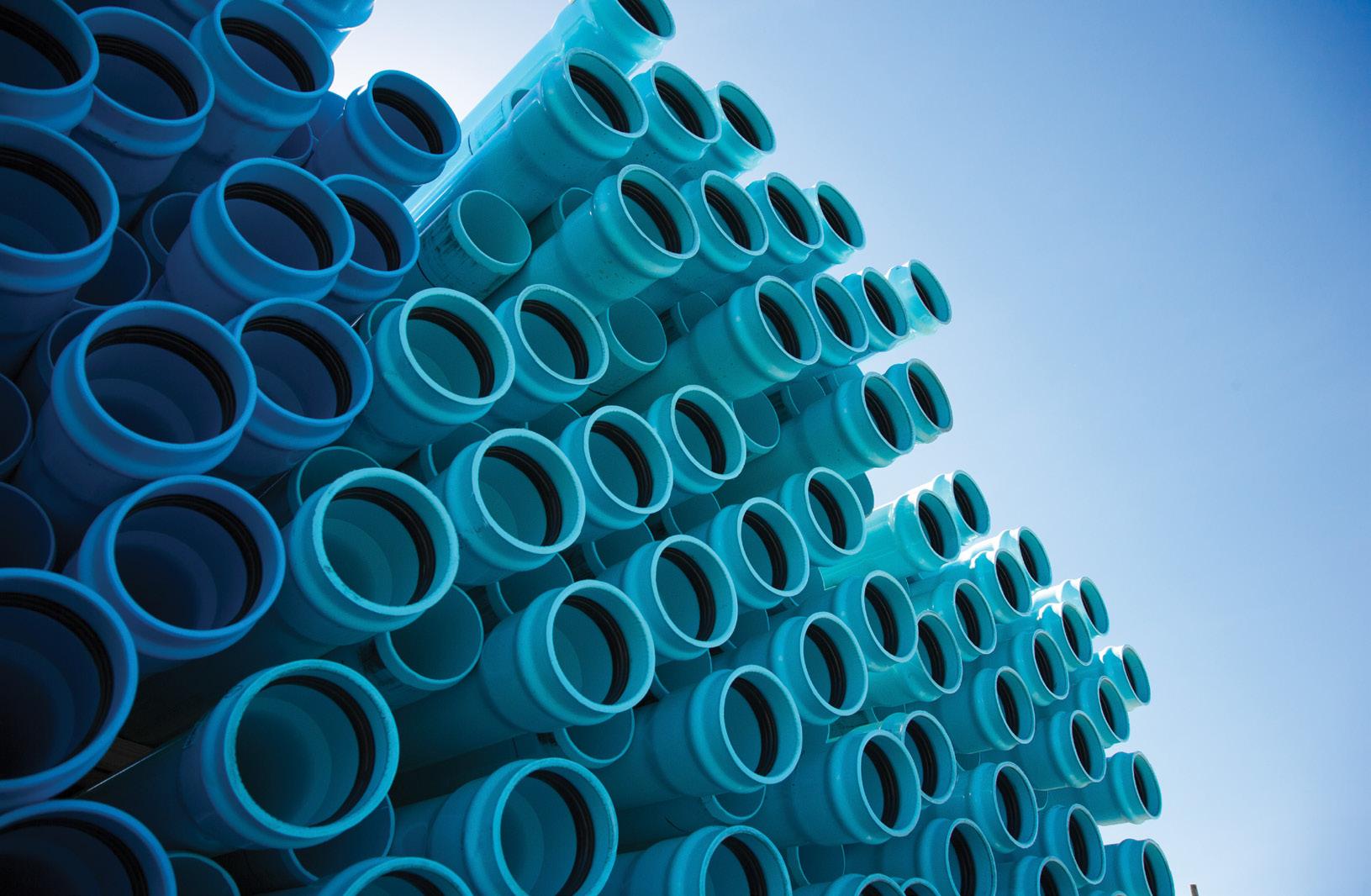Waste is no longer a forgotten


Waste is no longer a forgotten











Micropilot FMR20: Level radar with the process indicator RIA15 simplifies remote commissioning
Promag W 400: Versatile, weight-optimized electromagnetic flowmeter fits perfectly all standard applications.


Memograph M RSG45: Advanced data manager takes compliant, safe and secure operations control to a higher level.



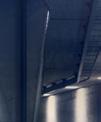




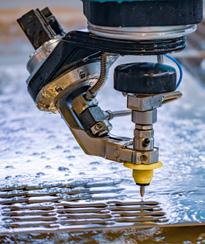


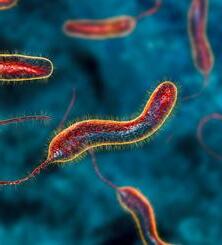
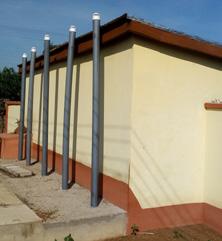
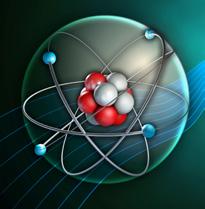
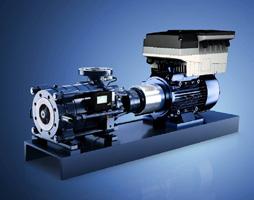
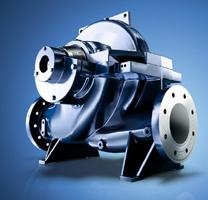

Water means life. KSB provides reliable and efficient systems for extracting and transporting water and disposing of waste water around the world. KSB helps ensure that people have access to water wherever they are.
Our team of expert engineers have years of experience delivering complex water and waste water turnkey solutions. Find out more about KSB and our efficient solutions now. www.ksb.com/en-za
KSB Pumps and Valves (Pty) Ltd


Tel: +27-11-876-5600
www.ksb.com/en-za
Level 1 B-BBEE Supplier

Editor Kirsten Kelly kirsten.kelly@3smedia.co.za
Managing Editor Alastair Currie
Editorial Coordinator Ziyanda Majodina
Head of Design Beren Bauermeister
Chief Sub-editor Tristan Snijders
Contributors Chris Ashmore, Lester Goldman, Dan Naidoo, Yazeed van Wyk
Production & Client Liaison Manager Antois-Leigh Nepgen
Distribution Manager Nomsa Masina
Distribution Coordinator Asha Pursotham
Group Sales Manager Chilomia Van Wijk

Advertising Sales Hanlie Fintelman
c +27 (0)67 756 3132
Hanlie.Fintelman@3smedia.co.za
It is
Paradigm shift’ is a pompous phrase – it is overused, misused and misunderstood.
Publisher Jacques Breytenbach
3S
The term refers to a major change in the worldview, concepts and practices of how something works or is accomplished. It signifies a departure from traditional methods and beliefs to new, innovative approaches. A paradigm shift can happen within a wide variety of contexts, from scientific research to industry.
• ‘DWS embraces the sanitation paradigm shift’ (page 46): where the Department of Water and Sanitation now considers the entire sanitation service chain, instead of merely building toilets.
From linear to circular, centralised to decentralised, individual to collective, conventional to innovative, basic to sustainable, fragmented to integrated, and use to reuse –changes are happening and I am excited and honoured to bear witness (and report on) all of them.
WISA Contacts:
HEAD OFFICE
Tel: 086 111 9472(WISA)
Fax: +27 (0)11 315 1258
Website: www.wisa.org.za
BRANCHES
Central Branch (Free State, Northern Cape, North West)
Chairperson: Dr Leana Esterhuizen
Vision Inspiring passion for water
Physical address: 1st Floor, Building 5, Constantia Park, 546 16th Road, Randjiespark Ext 7, Midrand
Historically, water management has been primarily focused on supply-side solutions, such as dam construction, reservoirs and centralised water treatment plants. However, as the world faces increasing water scarcity, pollution and climate change, there is a growing recognition of the need for a paradigm shift in how we perceive and manage water.
I recently attended the IFAT Conference, and was impressed with the number of exhibitors showcasing water and sanitation services and technologies, as well as the delegates searching for answers to better manage water and sanitation.
Company: Central University of Technology
Tel: +27 (0)51 507 3850
Email: lesterhu@cut.ac.za
Eastern Cape:
Branch Contact: Dan Abrahams
Company: Aurecon
Tel: +27 (0)41 503 3929
Cell: +27 (0) 81 289 1624
Email: Dan.Abraham@aurecongroup.com
Gauteng
Branch Lead: Zoe Gebhardt
Cell: +27 (0)82 3580876
Email: zoe.gebhardt@gmail.com
KwaZulu-Natal Chairperson: Lindelani Sibiya
Company: Umgeni Water
Cell: +27 (0)82 928 1081
Email: lindelani.sibiya@umgeni.co.za
Limpopo
Chairperson: Mpho Chokolo
Company: Lepelle Northern Water

Cell: +27 (0)72 310 7576
Email: mphoc@lepelle.co.za
Mpumalanga
Chairperson: Lihle Mbatha (Acting)
Company: Inkomati-Usuthu Catchment Management Agency
Tel: +27 (0)13 753 9000
Email: mbathat@iucma.co.za
Western Cape Chairperson: Natasia van Binsbergen
Company: AL Abbott & Associates
Tel: +27 (0)21 448 6340
Cell: +27 (0)83 326 3887
Email: natasia@alabbott.co.za
Namibia
Please contact the WISA Head Office at admin@wisa.org.za for more information
Traditionally, sanitation has focused on the provision of basic facilities and services to manage human waste and maintain public health. However, a paradigm shift in sanitation involves adopting new approaches, technologies and strategies to address the complex challenges associated with sanitation.
I am guilty of using ‘paradigm shift’ in two articles in this magazine:
• ‘Tackling the irony of renewable energy’ (page 14): where mine water management can be centred around the water-energy-waste nexus and mitigate any effects on the environment and society.
The lack of value people place on water is the reason why it is mistreated. It is only when the true value is placed on water that technologies and process systems begin to become important. And they are becoming important. The growing interest in the treatment of water and new sanitation technologies gives me hope. This magazine is filled to the brim with examples.
Happy reading,
In each issue, Water&Sanitation Africa offers companies the opportunity to get to the front of the line by placing a company, product or service on the front cover of the magazine. Buying this position will afford the advertiser the cover story and maximum exposure. For more information, contact Hanlie Fintelman on +27 (0)67 756 3132, or email Hanlie.Fintelman@3smedia.co.za.

of absolute relevance to the water sector. Our approach to water and sanitation management is truly undergoing a significant transformation.
APE Pumps is a proudly South African company that is committed to and invested in South Africa. Our products are 100% locally cast by South African foundries using local materials. That has major advantages for our clients because we are not reliant on imports and can design and fabricate pump systems within remarkably short turnaround periods. If well maintained, our pumps will last a lifetime - across Southern Africa, there are hundreds of working examples.”
 Peter Robinson, director, APE Pumps
Peter Robinson, director, APE Pumps

“Regulation 3630 empowers both process controllers and members of the public. It presents process controllers with an opportunity to forge a career as well as constantly upskill themselves and will play an important role in improving water and wastewater services for the public.” Dr Lester Goldman, CEO, WISA
“There is an adage that says, ‘If you want to go fast, go alone. If you want to go far, go together.’
WISA provides a platform for multiple stakeholders from a wide range of disciplines to meet, discuss and come up with innovate solutions for a sustainable water.”


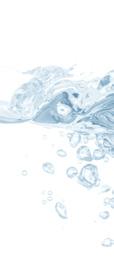 Ashton Mpofu, non-executive director, WISA
Ashton Mpofu, non-executive director, WISA
“It is ironic that the environmentally friendly goals of renewable energy have driven demand for the extraction and processing of minerals for lithium-ion batteries, wind turbines, motors and solar panels. Fortunately, technology is available to minimise any adverse environmental and social consequences of the mining industry. Veolia Services Southern Africa addresses this irony via our unique water-waste-energy perspective for mining operations. We aim to create an environmental circular economy through the complete management of a mine’s water cycle.”
Reinier
Delport, business
“Mining companies must anticipate different climate change scenarios and then consider the impact on the operational and closure phases of a mine’s life. Traditionally, water resource infrastructure design has been based on the principle of ‘stationarity’, assuming that probabilistic characteristics of hydrologic and meteorologic processes remain consistent over time. However, it is evident that climate trends are shifting, making it insufficient to rely on historical climate data from the 1950s.”
Mehmetcan Özkadıo ğ hydrologist, SRK Consultinglu,
development
manager:Heavy Industry, Veolia Services Southern Africa
“The automotive sector is a major consumer of water, which is a critical component in various production processes, including paint spray booths, surface treatment and coating, hosing, rinsing and washing. Of the various automotive production processes that use water, metal finishing operations are notorious for high water consumption, but it is in the paint shop that water consumption is most significant.” Chris
Ashmore, GM, Watericon Group








“Anaerobic digestion holds significant promise for a country like South Africa with its energy and water problems. This creation of energy from rich organic effluent has become a successful reality and is being applied by an increasing number of food and beverage manufacturers worldwide. These industries have started reaping the environmental and financial rewards and we look forward to installing and operating more biogas projects in the future.” Grahame Thompson, project director, Talbot
“Most of this infrastructure is ageing and was built in the 1940s. Furthermore, theft and vandalism at all three of the complexes are a major issue. While we have security on the sites and armed patrols at night, vandalism and theft still regularly occur. This affects water supply and can be time-consuming to rectify. When thieves steal infrastructure such as valves and cables, it takes time to procure replacements while residents are left without water. Importantly, budget for infrastructure maintenance and upgrades has to be redirected to security measures.” Gugulethu Quma, electromechanical engineer: Operational Networks, Johannesburg Water
“M&D has always been able to work well with communities located within our project footprints. This ability is becoming increasingly important and one of the reasons that we remain a preferred pipeline contractor for municipalities and waterboards.” Donald Davies, site agent, M&D


“Isotope hydrology is vital in managing and conserving water resources. But the region faces a significant shortage of skilled professional. This has resulted in inadequate monitoring and management of groundwater and surface water resources, which poses a significant threat to South Africa’s socioeconomic development.” Yazeed van Wyk, research manager: Groundwater Hydrology, WRC

“It is no longer about simply constructing a toilet, but looking at the entire sanitation service chain. Given the challenges in access to the unserved, there is a need to adopt alternative sanitation solutions or non-sewered sanitation


“We are called the Department of Water and Sanitation; sanitation bares equal weight. Sanitation services have









Located in Verulam, 24 km north of Durban, KwaZulu-Natal, the Hazelmere WTW treats an average of 72 Mℓ/day of water, which it supplies to eThekwini Metro, iLembe District Municipality and Siza Water.

The Verulam and La Mercy Pump Station is part of the Hazelmere Water Treatment Works (WTW) system and has seven pumps –four pumps dedicated to the La Mercy area and three for the Verulam area.
Water from the Verulam side of the pump station is pumped to a holding tank at Grange that distributes to surrounding areas. The La Mercy side of the pump station also acts as a backup to the Avondale Pump Station that supplies Ballito. Water from the Verulam side services a population of 70 000 people.
In order to meet all pumping requirements to iLembe District Municipality, APE Pumps was appointed by Umgeni Water to
replace all damaged electrical, mechanical and instrumentation equipment, as well as attend to supporting infrastructure and facilities at the Verulam and La Mercy Pump Station.
The scope of works included:
• repair of faulty variable-speed drive (VSD) equipment for pump set 4
• repair of faulty La Mercy pump set 2 and 3
• refurbishment of faulty Verulam pump set 1 and 2
• supply of new La Mercy pump set 1
• supply of new Verulam pump set 3

• replacement of motors (La Mercy 1, 2 and 3, as well as Verulam 1 and 2)
• replacement of damaged delivery valves (La Mercy 1, 2 and 3) and (Verulam 1 and 2)
• replacement of blower room equipment’s pump and motor
• supply of drainage pump and motor control for flood prevention
• roof repairs to La Mercy Pump Station
• commissioning of all pump sets at La Mercy and Verulam Pump Station.
With the aim to pump 30 Mℓ/day of water from the Verulam pumping station to the Grange reservoir, pump set 3 was added to the two existing pumps at Verulam. Suction valves and piping were added, along with non-return valves, gate valves and actuators.
“Pump set 3 is bigger (500 kW) than the two other ones (185 kW) due to a new bulk water pipeline being built for the Grange area. Since we are ahead of the schedule and the pipeline is not complete, we have had to throttle the flow and reduce the pressure for the old line,” explains Peter Robinson, director at APE Pumps.
The pump station was also fitted with a Scada system, enabling it to be remotely operated and monitored from the Hazelmere WTW Office Block.
All pumps at the Verulam and La Mercy Pump Station are APE vertical turbine pumps. Vertical turbine pumps are centrifugal pumps that are designed to operate in a vertical orientation, with the impeller located below the water level. APE Pumps offers a range of vertical turbine pumps designed to meet various flow and head requirements. These pumps are known for their high efficiency, durability and long service life. They are especially well suited for installation within smaller footprints like pump stations, saving on construction costs, or where space is too restricted for a multistage pump setup. Another major advantage of vertical pump systems is that they are relatively simple to strip and maintain.
The company worked with OBS Mechanical Electrical Turnkey Projects – a Level 1 BBBEE company – for transformation purposes. OBS has already partnered with APE Pumps on a number of Umgeni Water projects (including the installation of pump 4 at the Verulam pumping station). The company has expertise in many areas of engineering, including water movement and treatment.
Pump 4 at La Mercy
“APE Pumps has previously worked on the pump station. Two years ago,


APE Pumps replaced a split-case pump with a new vertical turbine pump (APE
18 HC) – complete with piping, auxiliaries, valves, instrumentation and a motor. The pump was specifically designed to fit into the footprint of the old one. It was fitted with a 650 kW VSD, where, instead of running two pumps in line, only one pump would be used. This is because pump 4 can deliver in excess of what the two pumps could currently achieve,” states Robinson.
After problems were experienced with the switchgear and induction motors, APE Pumps was further tasked with replacing the medium-voltage switchgear from the 6.6 kV 2 off 1.6 MVA 11/66 kV transformer. Six 6.6 kV 500 kW soft starters were installed – an extra one was included for future expansion plans.

“The APE Projects Division has managed and implemented the design, installation and commissioning of VSDs switchgear, motors, transformers, valves, distribution boards, cabling, pipework and pipelines,
as well as, of course, pumps for both projects. This division takes responsibility for mechanical, electrical and civil works, and is currently graded as an 8 ME contractor by the Construction Industry Development Board. APE’s pumps are only guaranteed if the project team completes the installation,” adds Robinson. He states that APE Pumps is a proudly South African company that is committed to and invested in South Africa. “Our products are 100% locally cast by South African foundries using local materials. That has major advantages for our clients because we are not reliant on imports and can design and fabricate pump systems within remarkably short turnaround periods. If well maintained, our pumps will last a lifetime – across Southern Africa, there are hundreds of working examples.”
Regulation 3630 came into effect on 30 June 2023, announcing that all water and wastewater works must be overseen by someone who has the relevant qualifications and experience to ensure compliance and best practice principles. This is a major step in recognising class 5 and class 6 process controllers as professionals, similar to engineers and scientists.
Process controllers will need to register with WISA, the custodian of the professional process controller designation. WISA will assist process controllers in maintaining their professional status by honing their skills. In addition, we will provide guidance and support to new entrants into the field.
WISA has, for many years, advocated for the professionalisation of key
positions within the water sector and are excited and encouraged by Regulation 3630. It adds a layer of accountability to the day-to-day operations of South Africa’s water and wastewater treatment works.
Professionalisation standardises the education and training required for an occupation. This means that the public can at least anticipate the standard of the service provided. Professionalising key positions within the water sector will ensure that the right person is in the right job and, once they are in that job, they are professional. It will narrow down nepotism and political appointments. This can be done by simply identifying key legislation that needs to be changed.
A key way the public can hold a person within our industry accountable is if they belong to a professional body. A professional body such as WISA looks after the professional needs and reputation of

its members. If one of our member’s actions lack integrity and tarnish the reputation of our industry and profession, we are obliged to act and remove the process controller’s professional registration.
Every time a lack of capacity and competence is mentioned, training is required. WISA, LGSETA and EWSETA will work together with experts to ensure that all process controllers receive the required training to gain and maintain a professional status. Regulation 3630 empowers both process controllers and members of the public. It presents process controllers with an opportunity to forge a career as well as constantly upskill themselves and will play an important role in improving water and wastewater services for the public. This is about improvement.
All water and wastewater institutions must be compliant with Regulations 3630 by 30 June 2025.

Our champions of the water sector – process controllers – have been given the professional status they deserve with the promulgation of Regulation 3630. By Dr Lester Goldman, CEO, WISA
Due to strong political leadership, there is traction in the water and sanitation sector where studies and position papers from many years ago are now being implemented. One such example is the transformation of the regional water utility space. By
Dan Naidoo, chairman, WISA
This reconfiguration of water boards will give additional support to the undercapacitated water services authorities (WSAs) to meet the rapidly increasing demand for services by communities and ensure adequate capacity with quality and skilled support from the new regional water utilities.
Umgeni Water and Mhlathuze Water are merging to form uMngeni-uThukela Water. The scope of Rand Water will be extended to cover the entire Gauteng and Mpumalanga provinces. Lepelle Northern Water board’s boundary is also being extended to service the entire Limpopo province. Magalies Water’s scope expands to service the entire North West province, taking over from Sedibeng Water, which was disestablished last year. Bloem Water will service the whole Free State and the Northern Cape as part of the reconfiguration. In the Eastern Cape, Amatola Water’s scope has been extended to cover the entire province.
These plans have been part of the National Water Resource Strategies (NWRS) 2 and 3 that is focused on stabilising water
security for the future in South Africa and will allow municipalities to focus on reticulation and improved water distribution.
There are also other positive developments. Rand Water shut down some of its water supply for 58 hours to repair and maintain some of its ageing infrastructure. Even though Johannesburg residents have been inconvenienced, this is an example of a capable organisation not defaulting to short-term fixes, but trying to permanently resolve an issue for the long term. This shutdown has stabilised a part of the water value chain.
Supporting WSAs
National government has had to increasingly intervene in local government issues; the recent cholera outbreak is an example. Water and sanitation have been brought to the forefront and this has necessitated a focused institutional realignment process to managing current and emerging risks. There is now an added approach to the regional positioning of these services.

There may be a few alignment issues, but the bigger picture impact will be realised in a few years’ time where marginalised municipalities will receive better support due to the economies of scale of larger water boards. This will go a long way towards achieving SDG 6.
As Minister Senzo Mchunu says: “Larger water boards have the capacity to sustain themselves with financial muscle, where they can raise money to render services on their own. The reality is that the expenditure to implement projects is too high, the demand of services is also too high; however, the delivery by government institutions is too low and we need to fix this as a matter of urgency.”
How did your career in water and sanitation begin?
AM In 2015, after my retrenchment as a process engineer in the mines, I worked as a research assistant on a project funded by the Water Research Commission (WRC). It focused on water and wastewater management in the tanning and leather finishing industry.

What have been some of the highlights of your career so far?
There are a few notable career highlights in the last eight years:
- authored four market intelligence
reports and promoted investment in the South African water sector
- serving as a non-executive director (board member) at WISA
- chairing Young Water Professionals
South Africa (YWP-ZA) and IWA YWP steering committee
- completing my PhD in chemical engineering
- completing three research projects focusing on the beneficiation of industrial wastewater and sludge for resource recovery
- published two book chapters, three technical reports and 10 research articles.
What do you find challenging about your career?
Knowing the availability of viable solutions that can solve our water woes but not seeing them being adopted and implemented. Worst of all, living with this reality.

What advice would you give to someone beginning their career?
There are a few things that I always share with young professionals:
• Have a game plan, show up and keep moving forward: It is important to have a career game plan on how you will accomplish your career goals, and when you will attain them. This will help a lot in terms of building a successful career in the sector, as it will inform your decisions, keep you focused on the goal and determined. However, you shouldn’t give up when things fall apart and when expectations do not
WISA’s non-executive director and GreenCape’s expert water analyst – Ashton Mpofu – answers some questions about his career in water.Ashton Mpofu Ashton has completed research projects on the beneficiation of sludge for resource recovery
align with reality. Downfalls and setbacks are a part of our lives. What is important is to show up and keep moving.
• Stay humble and learn: You need to develop an appetite for learning and getting feedback from peers. Keeping a balanced perspective and welcoming the viewpoints of others, especially seasoned professionals and those you trust, is vital. Learning leads to growth and development.
• Build professional relations and grow your network: Be intentional about getting to know fellow peers in the sector and focus on forming solid professional relationships. Take a few minutes out of your day to grab lunch, coffee or virtually have conversations with your peers and seasoned professionals. Often, the strongest relations are grown at the beginning of your career. This includes finding mentors who will guide and help you with your career growth. Hard work and brilliance alone may not be enough.
If you could grant one wish for the water and sanitation sector, what would it be?

That would be Sustainable
Development Goal 6 – universal access to potable water and safe sanitation.

Why should water and sanitation professionals join WISA?
There is an adage that says, “If you want to go fast, go alone. If you want to go far, go together.”
WISA provides a platform for multiple stakeholders from a wide range of disciplines to meet, discuss and come up with innovate solutions for a sustainable water future in the region. Water
If there were one wish Ashton could grant, it would be for the world to achieve SDG 6
insecurity and a lack of universal access to water services cannot be solved while working in silos. WISA promotes a cross-disciplinary approach and inclusivity in solving our water woes. Additionally, WISA provides training to capacitate water professionals and ensure their continuous professional development to better serve the sector.
What are you currently reading?
I am currently reading From Third World to First: The Singapore Story: 1965-2000 by Lee Kuan Yew.
Favourite podcast?
Diary of a CEO
What life lessons you have learnt along the way?
• You cannot please everyone: You do not need to be liked by everyone or for everyone to agree with you – it is impossible. The desire to be liked, valued and respected is natural, but
that cannot be at the expense of your integrity, values and happiness. Do not look to other people to give you the validation you seek.
• We are stronger than we think: No matter what life throws at you, you are stronger than you can ever imagine. It only takes determination, faith and bravery to stand up for yourself and tackle everything that life throws at you. Nothing is impossible, you will always figure things out eventually.
• Seize the opportunity regardless of the outcome: No matter how meticulous and detailed your plan is, sometimes things do not work out, even if you work hard. That is okay; what matters is that you took your chance and that you gave your best. Often, this comes with learnings and you eventually land somewhere. It is better than not taking your chances and remaining stagnant. We have all of these expectations –predetermined visions of what our ‘ideal’ life will look like – but, all too often, that’s not the reality of the life we end up with. Sometimes, our dreams fail and sometimes we just change our minds mid-course. And sometimes, we have to fail to find the right course or try a few things before we find the right direction.
• Discern and set healthy boundaries: No matter how difficult, it is key to set healthy boundaries especially if you are around toxic people. Mental health is vital and you must be selfish in ensuring that your environment keeps them sane. Sometimes, our comfort zones created by friends and family are toxic to our biggest goals in life. Setting healthy boundaries and sticking to them will pay off in the long run.
What keeps you motivated and going each day?
As terrifying as it may sound, it is the fact that I live once and that death is inevitable. I have to keep pressing towards my goals.
The industry, mining and power generation sector accounts for more than 10% of the total annual water use in South Africa. The WISA Mine Water Division has drafted a position paper on water conservation and water demand management (WC/WDM).

All mines are required to license their water uses as per Section 21 of the National Water Act (No. 36 of 1998 [NWA]). Submitting a five-year WC/WDM plan with water-use efficiency (WUE) targets and an annual performance report is a condition of the water licence. This WC/WDM plan is a fundamental step in promoting WUE and is consistent with the NWA, which emphasises the effective management of water resources.
WC/WDM simply refers to the minimisation of loss or waste of water through efficient and effective control of the supply and demand for water. Societal expectations of mining and associated performance in water management are substantial.
Water security for current and future operations and WUE must be part of existing mining approaches. Mainstreaming of WC/WDM practices in mining companies is critical and important.
The Minerals Council South Africa collaborated with Department of Water and Sanitation (DWS) to develop WUE targets/benchmarks for the mining industry. The objectives are to provide a uniform and standard framework for WUE in the mining industry, to support regulatory function and voluntary compliance by the industry and to ensure sustainable water use for the strategic mining sectors likely to grow in the future.
Mine WUE measures must be implemented on a site-specific basis and may include water treatment, recycling and reuse as the tools available for management. Mines must set internal WUE targets and implement WUE measures in all areas of the operation and account for every drop of water that enters the operation and report on the water balance. This demonstrates the overall performance of the mine in terms of continual improvement in WUE and to feedback into a mine and DWS planning cycles. There is also an Excel spreadsheetbased self-assessment reporting tool that has been developed by the Minerals Council South Africa in partnership with the DWS. This can be used by the mines in the reporting and management of the WC/WDM plans. It is aimed at enabling mines to report their water balances in a standardised format and to enter and manage the WUE targets and WC/WDM action plans.
Mining effects on water ranges from minor increases in mineralisation content due to the dissolution of
natural rock formations, to extensive pollution as a result of acid mine drainage, radioactivity and destruction of the water courses themselves through altered flow, sedimentation and diversion.
Any water released off the mine (treated or not) must be suitable to meet the receiving water resource or next user’s water quality requirements. In many cases, dirty water is separated from clean water to avoid the pollution of clean water; dirty water is stored in

the pollution control dams and treated before release to avoid pollution of the receiving water courses.
Treatment of mine-influenced water to effluent standards before being released to the environment, recycling and the reuse of water within operations are measures employed by mines. There is ongoing research and development of new water management and treatment technologies that are continuously being pursued through the
collaboration of mining and water treatment technology institutions and companies. An emphasis is placed on minimising waste through economically viable and sustainable water treatment costs.
The higher the percentage of water reuse and recycling within a mine operation, the greater the reduction of new freshwater intake – leaving more water available for domestic and other developmental use in a particular catchment.
As mines start developing and implementing effective WC/WDM plans, these national benchmarks are expected to become more stringent (move downwards) to reflect the increased maturity of WC/WDM in the sector and the reduced availability of South Africa’s water resources.
Good mine water management and WUE are, however, prevalent in the industry for the most part. There are even cases where treated mine water is safely used as drinking water.

• PROCESS PIPING IN PE, PP, PVDF, ECTFE
• OUTSTANDING LIFESPAN
• UP TO OD 3500 MM (138“)
• ENERGY AND MAINTENANCE SAVING
• PRODUCT RELATED APPROVALS FOR POTABLE WATER
Veolia Services Southern Africa addresses this irony via our unique waterwaste-energy perspective for mining operations. We aim to create an environmental circular economy through the complete management of a mine’s water cycle,” says Reinier Delport, business development manager: Heavy Industry, Veolia Services Southern Africa.
Veolia’s water cycle management solutions for underground mines focuses on organisational performance, driving operational efficiencies and quality management systems. “We then develop continuous improvement strategies that work to optimise a mine’s water systems,” he adds.
This operational performance is based on five elements: environmental, economic, commercial, human resources and social. A phased methodology is used whereby Veolia assesses a mine’s needs, breaks them down into smaller projects, and then aligns and allocates these projects with their in-house expertise, divisions and
technologies to make available the best possible solutions and services.
“Veolia’s solutions for water, waste and energy management offer customers so much more than just a product or technical expertise – it helps them achieve their sustainability goals,” explains Delport.
Underground mine water reticulation cycle
Water is a crucial component that is needed at different phases of mining process. The process where water is collected underground, treated, cooled and reused in various process units is called the underground mine water reticulation cycle.

required quality standards. Treatment methods may include filtration, sedimentation, chemical dosing and disinfection.
3 Water distribution: The treated water is then distributed throughout the mine to different areas and processes where it is needed. This can involve the use of pipes, pumps and storage tanks to transport and store water. Water is pumped to cooling towers on the surface of the mine and then underground for mining activities and for cool air for operations.
1
Water collection: Water is collected from various sources within the mine, such as underground springs, surface run-off or dewatering processes.
4 Water recycling: After being used in mining operations, the water is collected, treated and recycled back into the reticulation system. This helps reduce the demand for freshwater intake and minimises the overall water footprint of the mine.
2
Water treatment: The collected water undergoes treatment processes at the settlers to remove impurities and ensure it meets the
5 Water discharge and environmental management: In some cases, excess or wastewater from the mine may need to be discharged. Before discharge, it normally undergoes additional treatment to ensure

The environmentally friendly goals of renewable energy have driven demand for the extraction and processing of minerals for lithium-ion batteries, wind turbines, motors and solar panels. Fortunately, technology is available to minimise any adverse environmental and social consequences of the mining industry.
compliance with environmental regulations and to reduce any potential impacts on surrounding ecosystems.
Delport explains that an underground mine has a surplus balance of water; there is always more water that needs to be treated or discharged than water that enters the mine. “This underground water has significant concentrations of heavy metals, toxins and impurities that can be harmful to the environment, human health and mining processes. Furthermore, it would be excessively expensive (and unsustainable) to exclusively use potable water.”
Different types of water in an underground mine includes:
• Fissure water: groundwater that is found within fissures or fractures in rock formations underground and normally has high acidity levels.
• Potable water: drinking water supplied by municipalities that is pumped underground for human consumption and certain processes.
• Mining activity water (service water): water released during mining operations, which can be present in mine shafts, tunnels, or underground chambers and usually has a concentration of salts, toxins and heavy metals.
“Underground settlers are at the heart of the mine water reticulation cycle. It is where pH neutralisation and softening are applied. By focusing on this part of the reticulation cycle, Veolia can optimise costs and production. It has a massive influence on the commercial operations of a mine,” states Delport.



Mine water will enter the settler through an inlet and will be treated for low pH levels. Mine water often contains high concentrations of
acidic compounds, such as sulfuric acid, which are generated during the mining process. Called acid mine drainage (AMD), this water can be highly corrosive and toxic to humans and the environment, and can corrode water-related structures and process equipment. It is generally formed when water encounters pyrite.
AMD is formed in three stages:
1. The oxidation of iron sulfide, forming iron hydroxide and sulfuric acid.
2. The iron hydroxide reacts with the sulfuric acid, forming ferrous sulfate.
3. The ferrous sulfate reacts with the sulfuric acid, forming ferric sulfate. The two processes of neutralisation and salt softening play a critical role in ensuring minor mechanical and hydrodynamic stresses to the water reticulation process units and enhanced outputs from the plant. These processes go hand in hand and characteristically occur concurrently.
pH neutralisation adjusts the pH of the water to a more neutral range, typically around pH 7-9. The neutralisation process involves the addition of alkaline
substances, such as lime (calcium hydroxide) or caustic soda (sodium hydroxide), to the acidic mine water.



These alkaline and pH buffering compounds react with the acidic components, such as hydrogen ions, present in the water, resulting in the formation of water and a salt. The reaction helps to increase the pH of the water, making it less acidic, and contributes to the precipitation of salts.
In addition to salt, mine water also contains high levels of dissolved minerals – such as chloride, calcium, sulfate, magnesium and iron – which can cause scaling and other operational issues in equipment and pipes. The underground


settlers are used to remove suspended solids and contaminants from the water through clarification otherwise referred to as salt softening. Salt softening is a treatment process that aims to reduce the concentration of these minerals in the water, making it less prone to scaling and corrosion, while also improving the water body’s overall conditioning characteristics.
During the neutralisation treatment process, the turbidity of the water increases as finely divided particles agglomerate together. Flocculants and coagulants are then added to the process to assist large particles to settle under gravity. A mud bed is formed and, after a certain retention time, the mud is removed from the settler and reworked in extraction plants to remove precious minerals. As the solid particles settle, the clear or clarified liquid rises to the top, known as the overflow.

“Total suspended solids (TSS) in the overflow must be reduced and kept at a process-specified operating range to prevent particles from damaging multistage pumps. From there, water is
cooled, chilled and sent to chiller dams,” he says.
According to Delport, lime is preferred over caustic soda for pH neutralisation. “This is because lime adds buffering to the water body where both iron and calcium are precipitated. Buffering capacity is the ability of the water body to maintain its pH level for a period of time. Furthermore, lime aids with softening and increases the activity of coagulants and flocculants. This is due to the pH level achieved by using lime. Veolia is able to deploy a wide range of chemical technologies to treat and condition different types of mine water.
“Anyone can add lime to a system; it’s about having an in-depth understanding of the hydrodynamics of the systems and how to best mitigate the process risks. We have a proven track record, and can assist a mine with dynamic solutions for their operational challenges, including specific applications like pH neutralisation and softening. Veolia has ample experience and expertise by working with mining companies from all over the world. It is through this expertise and experience that Veolia can optimise mine water chemistry to achieve the best possible commercial and environmental results,” he concludes.
www.rainbowtanks.co.za

Mines consume considerably less water than other sectors (5% compared to industry’s 7% and agriculture’s 61%). Yet water is vital for mining operations, and mines realise substantial benefits when they make their water operations more efficient.

Modern water technologies are a rich source for efficiencies, including lower power consumption from energy-efficient pumps, better environmental monitoring of discharged water, and improved productivity and lower costs through strategic dewatering and water reuse. When mines strategically combine water technologies, they receive many benefits in return.
Xylem calls this approach ‘IndustrialStrength Thinking’ – water management strategies that can incorporate:
• Dewatering: Clear water from open pits and underground areas with vertical turbine pumps, multistage ring section pumps, submersible pumps, pump controls and specialised generators. In open-pit mines, rainwater and seepage can be pumped to lower the water table to prevent groundwater influx. With underground dewatering, Xylem can assist with seeping water out of sumps, optimising main drainage, and pumping water out of shafts.
• Dust suppression: Contain dust on
trucks and tailings piles with singlestage, double-suction centrifugal pumps, stainless steel vertical multistage pumps, and their control equipment. With dust suppression, Xylem can assist in maintaining a safe working area and clean equipment while still protecting the environment.
• Wastewater and recycling: Get more out of used water and reduce environmental impact with ozone oxidation systems, adaptive submersible mixers, hydraulic submersible pumps, and water quality monitoring.
• Heat transfer: Manage water temperature and pressure through heat exchangers, high-pressure multistage pumps and proactive monitoring systems.
• Environmental monitoring: Reduce environmental impact and comply with regulations through portable water quality instruments, water quality monitoring, and remote data access.
• Water boosting: Boost water out of shafts or up to high elevations, efficiently and cost-effectively, with pumps designed for easy installation,

low maintenance and durability. This can be done using portable self-priming pumps, multistage booster pumps and wireless pump controls.
• Source water: Find more efficient ways to move water from lakes, rivers and tailing ponds, integrating with mobile, easy-install treatment systems. This can be achieved using Xylem’s multistage booster pumps, high-pressure multistage pumps, submersible pumps, vertical turbine pumps, single-stage double-suction pumps, automatic selfpriming pumps, wireless pump controls and drives, ozone treatment systems, and advanced monitoring and remote access controls.
• Pipeline integrity: Use leak detection and mapping to stay on top of pipe condition and prevent serious failures. Visit Xylem’s Virtual Experience, which showcases ways to address specific issues in mines and can assist in an integrated and efficient water management environment with automation and remote monitoring.
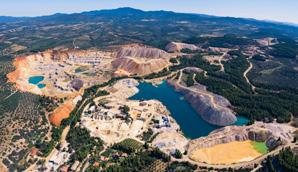


According to the World Bank’s Climate Change Knowledge Portal (CCKP), South Africa is experiencing a warming trend that is about 1.5 times the global average. Kirsten Kelly talks to Mehmetcan Özkadıoğlu, hydrologist at SRK Consulting, about the impact of climate change on mine water management.
South Africa is currently undergoing notable climate transformations – a trend that’s becoming more and more evident,” explains Özkadıoğlu. “Climate change projections are predicting a temperature increase of 1°C to 2°C across the country by mid-century. Accompanying this, we are anticipating a shift in rainfall patterns, leading to an increase in rainfall for some of the areas and a decrease in overall rainfall trends in other areas, which could potentially lead to drier and wetter mining conditions. At the same time, the climate models project an increase in the intensity of rainfall and the frequency of storm events, increasing the risk of mine flooding. The probability of extreme heat events, which can intensify evaporative losses, is also expected to rise. These changing climate patterns are essential to incorporate in the mine water management strategies, highlighting the urgency of climate change considerations in our decision-making processes.”

Climate change significantly impacts water resources, and the following are key considerations for the mining industry and mine water management in South Africa.
• Water scarcity: Climate change is projected to significantly impact on water resources, with a major concern being the potential decrease in water availability. This can result in water scarcity, posing a challenge to waterintensive mining operations.
• Extreme weather events: A key principle in thermodynamics is that as air temperature increases, so does the atmosphere’s ability to hold water vapour. This can lead to more severe and frequent storm events. These extreme storm events can disrupt mining operations, damage crucial infrastructures – such as stormwater structures, tailings, water supply dams, open-pit operations and waste rock dams, among others – and pose safety risks.
• Changes in water quality: Changes in temperature and precipitation due to climate change can affect the quality of water. Increased rainfall intensity, for instance, can lead to a rise in sediment loads in the surface run-off, affecting the quality of water used as the mine process water. On the other hand, decreased rainfall and increased temperature can result in higher concentrations in contact waters and reduce the water quality.
• Increased energy consumption: For mining operations that are delving deeper and encountering lower ore grades, there is an escalating demand for water and an increase in mine waste. This situation contributes to a rise in energy consumption and expands the industry’s carbon footprint.
• Reputational risks: Failure to adequately factor in the impacts of climate change on mining operations could lead to disputes with host communities, potentially affecting the social licence to
operate, as water supply may be reduced for the communities.
Adaptive strategies and precautions
Mining companies must anticipate different climate change scenarios and then consider the impact on the operational and closure phases of a mine’s life. There are various adaptive strategies:
• Climate risk assessments: Mining companies should integrate climate change risks into their risk assessment processes. This includes considering future climate scenarios in the planning and design of mining operations and infrastructure. Given the dynamic nature of climate conditions and the evolution of methods to understand future climatic models, these studies are recommended to be updated at intervals of 5-10 years.
• Water efficiency: Improving water efficiency can help mining companies adapt to water scarcity. This can be achieved through measures such as water recycling and reuse, using alternative water sources, and implementing watersaving technologies.
• Stakeholder engagement: Engaging with local communities, governments and other stakeholders can help mining companies understand local issues related to water management and develop appropriate strategies.
• Innovation and technology: By incorporating innovative technologies,
mining companies can effectively adapt to the challenges posed by climate change, enhancing their resilience and sustainability.
Understanding the potential impacts of climate change is key for the design, construction, operation, and closure of tailings storage facilities (TSFs).
The Global Industry Standard on Tailings Management (GISTM) is a framework developed to prevent tailings dam failures. It aims to achieve the safe and secure management of tailings facilities by establishing clear expectations for companies, governments and other stakeholders. In the context of climate change, GISTM can help mining companies adapt by promoting the use of best practices in tailings management, considering climate change in risk assessments and improving the resilience of tailings facilities to extreme weather events.
“The design and construction of current tailings dams have not fully considered the fluctuating climate patterns and the recent intensification of extreme weather events. It is now imperative to incorporate planning for an uncertain climate future into risk management strategies. Take, for example, the lifespan of certain tailings dams, which are projected to continue
operation for the next three to five decades before the closure phase. Despite their closure, these dams will continue to be vulnerable to the impacts of climate change. Therefore, it’s critical that we factor in future climate conditions not just during the operational stages, but also throughout the subsequent closure and post-closure phases of these dams,” says Özkadıoğlu.
Considering a future where a region experiences a rise in rainfall patterns, it’s essential to acknowledge the impact this shift in rainfall pattens will have on a range of operational aspects, hydrological and hydraulic processes. These include, but are not limited to, the infiltration of precipitation into TSFs, the decant from the TSF impoundment area, and the storage conditions of both the TSF and downstream return water dams. TSFs must be capable of storing and effectively releasing extreme storm volumes to prevent uncontrolled discharges from TSF. The design of diversion channels, which redirect excess run-off away from the TSFs, may need to be re-evaluated in response to these changes.
The increase in air and surface temperature, alterations in wind patterns, variations in cloud cover, and other factors will affect the evaporation

• Historical climate review: This involves historical data screening, gap analysis and baseline data evaluation to understand and compare current conditions with the projection models.
• Climate change review: It includes evaluating climate change data, focusing on four greenhouse gas emissions scenarios known as the Shared Socioeconomic Pathways. The aim is to understand how the climate is changing (rate of change) for the near-, mid- and long-term future, and what the projected trends are. The studies also include a review of short-duration storm events (2-yr, 5-yr, 10-yr, 20-yr, 50-yr, 100-yr, 200-yr and probable maximum precipitation).
• Detailed desktop modelling, impact assessments and mitigations: Using the projected climate conditions, the modelling and impact assessment studies may vary based on the specific needs of mining projects in line with water management, Global Industry Standard on Tailings Management, and tailings water management. The several studies performed:
- site-wide or facility-level water balance and climate change impact assessment

- stormwater management planning, including future hydraulic designs or review of existing structures under expected future climate scenarios
- evaluations of hydrologic, hydrogeological, and geotechnical conditions and potential impacts on TSFs (planning and design, construction, operation, closure and post-closure).
process. Additionally, it is important to consider that extreme weather events may potentially cause damage to the structure, necessitating a more resilient and robust design. The impacts of climate change will vary for each mine, depending on its specific location.
“Traditionally, water resource infrastructure design has been based on the principle of ‘stationarity’, assuming that probabilistic characteristics of hydrologic and meteorologic processes remain consistent over time. However, it is evident that climate trends are shifting, making it insufficient to rely on historical climate data from the 1950s, for instance, when designing structures like TSFs. Therefore, it is necessary to incorporate future climate projection models into our studies, relying on modelling techniques to predict and anticipate future climate patterns,” states Özkadıoğlu.

SRK Consulting adopts a comprehensive approach to addressing climate change, starting with a thorough analysis of local climate trends to establish baseline climate readings. Through this analysis, we assess the accurately representative historical baseline climate conditions for the site, downscale existing climate change models to match the site-specific conditions, and evaluate the rate of change for various parameters, considering the near-, mid- and long-term future. By thoroughly studying the unique characteristics of each mine, potential risks associated with climate change are identified, leading to
the development of effective solutions. This meticulous approach ensures that SRK Consulting is well equipped to address the challenges posed by climate change in an informed and proactive manner.

“It is important to remember that each mining operation is unique and, therefore, the climate change assessment should be tailored to suit the specific circumstances of each mine. The study should be a dynamic and ongoing process that can be updated as our understanding of climate change evolves and as more data become available,” adds Özkadıoğlu.
This process entails reconciling historical climate records obtained from on-site weather stations, regional weather stations and relevant climatic gridded models, if necessary, to address any gaps in physical data availability. Climatic gridded models (or climate reanalysis) are scientifically generated to provide a comprehensive historical climate record, ensuring the completion of missing datasets. It is important to note that the selection of the most representative models undergoes rigorous statistical bias correction and adjustment studies to ensure their accuracy and reliability.
The projected future climate models utilised in our analysis are based on global circulation models (GCMs). While historical datasets have traditionally been used to study climate patterns, GCMs are better suited for generating synthetic datasets to investigate the potential impacts of climate change on a global or continental scale. These computer-driven models can be scaled to provide site-specific projections,
aiding in weather forecasting, enhancing our understanding of climate dynamics, and projecting climate change.
Currently, the latest climate change models detailed in the Intergovernmental Panel on Climate Change’s Sixth Assessment Report (AR6) – specifically the Coupled Model Intercomparison Project (CMIP6) – are used to predict different climate change scenarios. These scenarios incorporate the concept of Shared Socioeconomic Pathways (SSPs) to represent different future greenhouse gas emissions and socioeconomic conditions.
There are four different SSPs (SSP1-2.6, SSP2-4.5, SSP3-7.0, and SSP5-8.5) within CMIP6. Each one represents a distinct pathway of future greenhouse gas emissions and socioeconomic conditions. SSP1-2.6 represents a lower-bound scenario where sustainability efforts are adopted globally, resulting in significant reductions in greenhouse gas emissions. On the other hand, SSP5-8.5 represents an upper-boundary scenario where fewer climate protection measures are being taken, leading to higher greenhouse gas emissions. Each SSP scenario includes 35 different models, creating a large dataset. This dataset requires detailed statistical analysis and risk profiling to support decision-making processes.
“We are already experiencing climate change. It is vital that we first identify the potential risks, and then actively develop strategies to mitigate and adapt to these future climate scenarios,” concludes Özkadıoğlu.
As the mining industry in Southern Africa continues to grow, there is an increasing need for pumps and valves that are bigger, more energy-efficient and sustainable.

KSB Pumps and Valves, a leading manufacturer of pumps and valves, has been at the forefront of this movement, designing and manufacturing pumps specifically built to meet the needs of the mining industry. With a focus on sustainability, KSB is leading the charge when it comes to providing equipment that can handle a variety of mining conditions, is easy to maintain, and can provide a long wear life.
“In addition to our focus on sustainability, KSB also dedicates time and energy to minimising downtime on our mining pumps, which is achieved through a range of measures, including the use of highquality materials and manufacturing processes, as well as extensive testing and quality control procedures,” says Rob Bond, area manager: Mining in Southern Africa, KSB Pumps and Valves. This in turn ensures that KSB pumps
are built to last, with minimal need for maintenance or repairs.
But when issues do arise, KSB’s aftersales service is there to provide support and assistance. With a global network of service centres and technicians, “KSB can provide rapid response times and quick repairs, minimising downtime and ensuring equipment is up and running as quickly as possible,” says Bond. This commitment to after-sales service is a key part of KSB’s approach to sustainability, as it helps to extend the life of their pumps and reduce the need for replacement or disposal.
“One of the biggest challenges facing the mining industry is the need to operate in a sustainable and environmentally friendly manner. To meet this challenge, we have focused on developing pumps and valves that are designed to reduce energy

consumption and minimise the environmental impact,” Bond adds. By using the latest technology and materials, KSB has been able to produce pumps that are more energy-efficient, while still delivering the level of performance the mining industry demands. KSB’s after-sales service is also focused on preventative maintenance, with a range of services available to help customers keep their pumps and valves in top condition.
From regular inspections and maintenance schedules to training and technical support, KSB’s aftersales service is designed to help customers get the most out of their equipment, while also reducing the environmental impact of their operations.
“We have 37 production sites in 18 countries and nine foundries on three continents. Plus, we have over 3 500 worldwide service staff ready to assist you wherever you may be. KSB Mining has proven it is well equipped to offer our partners a complete package of products and services. We use our expertise to make our customers’ experience easy and successful. We provide exceptional and unparalleled customer service,” he concludes.



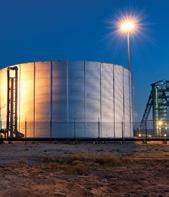
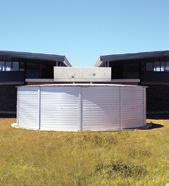
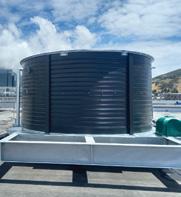

Electric motors, CO2 emission reduction and lightweight construction are key issues for the automotive sector, but what about water? Automotive manufacturers use thousands of litres of water each day – making this an ideal cost-saving and sustainability focus.
By Chris Ashmore, GM, Watericon GroupWater conservation is becoming an issue of growing importance in sustainable vehicle manufacturing – not to mention the cost savings associated with sustainable water usage. Around the world, automotive manufacturers and suppliers are collaborating in their efforts to improve the environmental performance of their organisations.
Unfortunately, the true cost of using water is often misunderstood across industries, resulting in poor management choices regarding how water is used and treated.
For example, the automotive sector is a major consumer of water, which is a critical component in various production processes, including paint spray booths, surface treatment and coating, hosing, rinsing and washing.
Of the various automotive production processes that use water, metal finishing operations are notorious for high water consumption, but it is in the paint shop that water consumption is most significant. The painting process itself uses considerable water volumes, and processing equipment used
 Chris Ashmore, GM, Watericon Group
Chris Ashmore, GM, Watericon Group

for automotive coatings must be cleaned regularly.

In addition to the use of water for these processes, there is also the matter of wastewater, which needs to be treated to high standards to meet environmental regulations.
So, how do automotive manufacturing plants ensure sustainability, improve their environmental footprint and save costs when their processes rely on using thousands of litres of water each day?
Watericon is a South Africa-based water treatment company that provides a full range of water treatment services for the industrial, municipal and residential sectors. Specifically, Watericon assists its customers in the automotive industry to become more sustainable, while simultaneously saving on costs and allowing them to focus on what they do best.
For example, one manufacturer’s plant used municipal water as a rinse water source in its paint shop (Zone 11); however, effluent from a different part of the plant (Zone 8) was not utilised, resulting in wasted water that could be reclaimed.
Watericon’s solution was to build a water treatment plant that could treat the effluent water from Zone 8, so that this water could then be used as supply rinse water to Zone 11. This eliminated the use of municipal supply in the circuit, reducing water costs and boosting sustainability by reclaiming and reusing wastewater.
Similarly, a competitor’s plant generates a noticeable volume of paint water effluent, which, if left untreated, is unsuitable for reuse.
The solution was to build a water treatment plant to treat the paint water effluent to a level where it becomes suitable for use in the existing reverse osmosis unit, thus eliminating the need for municipal water.
Since implementing the new treatment system, the plant has had the benefit of reusing the treated paint water effluent, a decreased reliance on municipal water usage, and decreased effluent disposal costs. Each solution is custom-built for the needs of the specific plant.
Responsible for the installation of over 20 anaerobic digestors in Africa, Talbot has extensive experience in building, designing as well as operating biogas plants, and is beginning to see an increase in biogas projects.


 By Kirsten Kelly
By Kirsten Kelly

Our specialisation is water and wastewater. Anaerobic digesters are one of the tools in our box. Interestingly, when Talbot initially installed anaerobic digesters some 20 years ago, biogas was viewed as merely a by-product. Today, more and more of our clients are utilising biogas for electricity or heat generation, as it is much more financially feasible,” says Grahame Thompson, project director, Talbot. Biogas is dependent on the amount of organic matter in the wastewater. “Most of our builds have been for the food and beverage industry where there is a high volume of sugars in the wastewater. There are also massive opportunities in the pulp and paper industry. But unfortunately, not all industries are suited to biogas production due
to some toxic elements found in the wastewater. Interestingly, domestic wastewater typically has low organic content and may not be the best option for biogas production, which is why aerobic processes are mostly used in municipal wastewater plants,” he adds.
When assessing the feasibility of a potential biogas project, Talbot will look at both the economic and technical aspects. “We need to understand the drivers – it could be compliance, security of energy supply, waste management or environmental sustainability. We then look at the volume of wastewater
ABOVE LEFT Mike Smith, associate director, Talbotand the organic content and understand where the wastewater is discharged.
There may be a limit on the amount of wastewater to be discharged or the tariffs may be expensive,” says Mike Smith, associate director, Talbot.
The chemical oxygen demand (COD) in wastewater determines the size of the digester. Biochemical oxygen demand (BOD) could be used to measure the organic content in wastewater, but COD is a faster test. The more COD in wastewater, the better the economies of scale. “Typically, a feasible biogas project in South Africa five years ago would require more than 5 000 mg/ℓ of COD. Today due to advances in technology and stricter regulations and higher tariffs around the discharge of wastewater, 2 000 mg/ℓ to 3 000 mg/ℓ of COD is feasible for a bigas project,” explains Smith.
The size of anaerobic digesters has also drastically decreased over the years and they therefore take up a much smaller footprint. They are also tightly sealed and therefore no longer release any odours. Depending on the wastewater and conditions, the conversion of waste to energy is significantly faster.
In addition to biogas, anaerobic digestion facilitates water recovery, reducing the amount of wastewater discharge and the use of potable water. “In South Africa, there is a huge interest in water reuse because our municipal systems are under strain and recovering water from industrial effluent limits the pressure applied to water and wastewater treatment facilities,” states Thompson.
Due to the high cost of anaerobic plants, there are various financing options. In some instances, Talbot can fund an anaerobic digestion plant, use the client’s wastewater and then charge for the plant’s output (water recovery/biogas).
“The client is receiving the benefits, and paying for it on a tariff basis, instead of laying out a huge amount of capital. Smaller anaerobic digesters can be rented on a three-year or longer basis,” adds Smith.
Thompson describes an anaerobic digestor as a living organism that constantly changes. Operators of biogas plants must constantly monitor the system and adapt feeding rates accordingly. It is important to remember that anaerobic digesters operate within certain temperature, pH and organic loading rate parameters. Biogas digesters can be overfed.
“It is important to know what has been fed into the system. For instance, dumping hydrocarbons or a biocide into an anaerobic digester can cause serious harm. That is why Talbot has a huge focus on the operational side of the business. The success of these types of systems is reliant on experts that monitor and control inputs and outputs of these digesters. The output of the digester largely depends on its input. Our experience in operating digesters across Africa is where we have developed a lot of our skill set.”
Anaerobic digestion holds significant promise for a country like South Africa with its energy and water problems. “This creation of energy from rich organic effluent has become a successful reality and is being applied by an increasing number of food and beverage manufacturers worldwide. These industries have started reaping the environmental and financial rewards and we look forward to more projects in the future,” he concludes.
30 seconds to detect a leak on a 20 mile pipeline

• Most sensitive internal leak detection system for liquid and gas pipelines

• Meets API 1130 and TRFL standards
• Advanced E-RTTM system combines range of techniques (RTTM, line balance, pressure wave, pattern recognition, hydrostatic pressure)
• Continuous and robust monitoring during all operating conditions



• Detects and locates product theft with dedicated rupture detection
• Adapts to existing instrumentation, complementaryrange of products and data acquisition units available

Demineralisation refers to the removal of dissolved solids from feedwater and process streams. By definition, it is the near-total removal of inorganic salts from water. In most industrial process water treatment applications, the removal of dissolved solids from feedwater and process streams is accomplished through ion exchange.
Demineralisation (demin) plants are widely used for industrial and scientific purposes such as in laboratory applications and testing, computer chip manufacturing, lead-acid batteries, cooling systems, high-pressure boiler feeds, laser cutting, steam irons and steam raising, pharmaceutical manufacturing, cosmetics, aquariums, and fire extinguishers. They require a lower capital investment than reverse osmosis plants and remove both cationic (positive) and anionic (negative) contaminants:
• Cations: calcium, iron, magnesium, manganese, potassium, sodium.
Allmech offers compact units that can be resized easily. The company caters for plants up to 15 m3/h of water, from raw water with a conductivity of 400 microsiemens
• Anions: chloride, nitrate, sulfate. How it works A demin plant typically consists of two vessels: one containing cation and the other containing anion exchange resins. Raw water enters first through the cation resin, where mineral contaminants are replaced by hydrogen ions, and next through an anion resin, where mineral contaminants are replaced by hydroxyl ions, which combine with the hydrogen ions to form
pure water. A demin plant then needs to be regenerated with hydrochloric acid and sodium hydroxide when necessary. Allmech offers compact units that can be resized easily. Unlike other suppliers, Allmech caters for plants up to 15 m 3/h of water, from raw water with a conductivity of
400 microsiemens. Their control valves interlink and ceramic ball valves can be used with the control valves. These control valves are chemical-resistant and reliable, while the ball valves do not cause water hammer.

Allmech also offers a programmable logic controller (PLC) system that works with its in-house developed software to run the ion exchange demineralisation.
Regeneration is carried out using a municipal or raw water supply. The full regeneration process is estimated at 2.5 hours.
When the product water’s total dissolved solids (TDS) exceeds a set point, the demin plant commences with regeneration. The first vessel cation bed is regenerated by using a calculated volume of hydrochloric acid, followed by the second resin vessel anion bed regenerating using a calculated volume of sodium hydroxide. Water must be ‘decationised’ to regenerate the anion column. When the anion unit has completed the regeneration cycle, the plant returns to service mode and is ready to provide treated water. The Runxin ceramic electronic ball valve is used to return the demin plant to service from the regeneration cycle. Thereafter, the system does a rinse and the TDS is measured – if it is not within spec, the system will repeat the regeneration before going into an alarm state and shutting off automatically so as not to waste water.
Three Runxin ceramic electronic ball valves (three-wire) 12/24 V DC units are used in the setup. The regeneration process makes use of hazardous chemicals that create a waste product that must be disposed of. During the regeneration process, water production stops, affecting plant production. If the system does not shut off after unsuccessful regeneration due
to a lack of available chemicals, it has the potential to waste a lot of water. A demin plant cannot run indefinitely – it needs downtime and manual inputs for regeneration to take place and resin replacement at approximately 10 years of use.
Some flexibility in the configuration of a demineralisation system is required in order to optimally meet various process conditions and purity goals. In designing a demineralisation system, consideration should be given to the changeability of the feedwater, level of purity needed, system footprint, tolerance for ion leakage (especially sodium and silica), and chemical feed requirements. The total dissolved solids (TDS) of the incoming water and required output are most important.
The size of the demin plant is dependent on the volume of water needed, the incoming TDS and the required TDS outcome. The maximum size is limited by the maximum vessel size that valves can be mounted on.
With the addition of the new PLC, Allmech’s demin plant is even more easily customisable through the programming of the various inputs. It also offers alarm functionality to flag when water quality does not meet standards, which ensures the water is not needlessly dumped through backwashing and alerts the user to potential issues in the system.
Pre-treatment of water may be required. This will depend upon the nature of the incoming water and the type of demin plant.
Examples include:
• A demin plant operated on low-conductivity municipal water where significant levels
Allmech also offers a programmable logic controller system that works with its in-house developed software to handle ion exchange demineralisation
of organics are present may need an organic scavenger or carbon filter for pre-treatment.
• A rinse water recovery demin plant system may also need carbon pre-filtration if there are high rates of organics or the presence of free chlorine.
• Multimedia filtration might also be used in this instance, where suspended solids (possibly resulting from metal hydroxide precipitation) could be present. Allmech can supply the pretreatment plants, filter plants and water storage facilities to help with the process.
The Blue Drop Watch Report focuses on the current condition of drinking water infrastructure and treatment processes from a technical perspective. This report is published prior to the release of the Blue Drop Report 2023 Report and comprises a technical overview of the country’s drinking water supply.
THE BLUE DROP WATCH REPORT COMPRISES:
144 water service authorities (WSAs) provide drinking water for domestic, commercial and business use via 1 186 water supply systems (WSSs). There are 1067 registered water supply areas, managed by 144 WSAs and supported by 26 water service providers (WSPs, including water boards)
Largest plant: design capacity of 4 800 Mℓ/day
Average plant: design capacity of 63.3 Mℓ/day
Smallest plant: design capacity
0.001 Mℓ/day
1) Technical site assessment (TSA) scores: Physical appearance of terrains and buildings, raw water abstraction and delivery networks, treatment plants, chemical handling, water processing units, bulk delivery systems, and distribution pump stations and pipe network.
2) VROOM: The Very Rough Order Of Measurement (VROOM) provides an estimate of funding required to restore existing treatment infrastructure to its original design capacity and operations, by addressing civil, mechanical, electrical and instrumentation defects.

3) DWQ: Drinking water quality (DWQ) compliance is measured against the requirements of SANS 241: 2015 and is reported in terms of the microbiological and chemical quality of drinking water (IRIS, 28 March 2023).
NUMBER OF WSAS AND SUPPLY SYSTEMS PER PROVINCE THAT WERE AUDITED IN THE BLUE DROP AUDITS OF 2022 TO 2023
Drinking water quality analyses indicate that 38% and 11% of systems achieve excellent and good microbiological quality, respectively, while the balance of 51% have poor to bad microbiological water quality status

An average TSA score of 69% was achieved for the 151 systems assessed, which indicates that infrastructure and processes are on average ‘partially functional with an average performance’.
The report highlights that the majority of WTWs do not produce SANS 241 compliant water

Out of 151 WSSs:
• 128 (85%) is found to be in ‘average, good and excellent’ condition
• 23 (15%) is found to be in ‘poor and critical’ condition
The best overall performing WSSs are found in Gauteng, followed by the Western Cape and Eastern Cape.

The worst overall performing WSSs are located in the Free State, Limpopo, Northern Cape and North West.
The associated VROOM costs needed to restore and refurbish dysfunctional systems amount to almost R1.5 billion , with the bulk of investment needed for the Free State and KwaZulu-Natal.
Access to safe and reliable drinking water is embedded in our Constitution and we want to protect consumers from potentially unsustainable and unsafe services. We want to raise the standard requirements of our water services institutions and to ensure that we strive for excellence in these fields. We recognise that this requires partnerships and are encouraged by the support from
This is the most concerning finding from this report. It highlights that the majority of WTWs do not produce SANS 241 compliant water, irrespective of their TSA condition and performance. The lack of water quality monitoring is alarming, as WSIs cannot operate and improve water services and quality if they do not know their basic status.
Drinking water quality analyses indicate that 38% and 11% of systems achieve excellent and good microbiological quality, respectively, while the balance of 51% has poor to bad microbiological water quality status.


Chemical compliance analyses show that 16% and 14% have excellent and good water quality, respectively, while the vast majority of plants fail to achieve chemical compliance (71%).
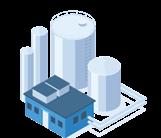

13 WSSs have no reported water quality data or no data has been uploaded or available at the time of the audit to enable analysis on compliance (four in the Free State, one each in Gauteng and Limpopo, three in Mpumalanga, and four in Northern Cape). Lack of monitoring or information automatically translates to zero compliance.

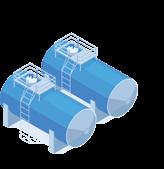
The Blue Drop Watch Report will be used as a basis to inform appropriate regulatory and support with the objective to facilitate the correction, restoration and improvement of water services to consumers. The report further serves to inform stakeholders and government departments as to the current status of drinking water infrastructure in the field, with the intent to mobilise rectification measures without having to wait for the release of the Blue Drop Audit Report.
The regulator will continue to monitor performance in terms of Section 62 of the Water Services Act and will engage together with CoGTA, Salga and MISA, all water institutions that fail to meet safe drinking water standards. Should corrective actions fail, the DWS will consider civil action together with actions contemplated under section 63 of the Water Services Act (No. 108 of 1997) to ensure that ministerial directives are issued with timeframes for implementation. Failure to respond will trigger remedial action be taken at cost of the non-complying entity or municipality.


The DWS will take steps to improve its capacity to respond more effectively in this duty, in ensuring visible and measurable improvement in drinking water services. CoGTA and National Treasury will be engaged to explore ways of utilising conditional grants for the purpose of remedial intervention.

The Hammanskraal community under the City of Tshwane (CoT) Metropolitan Municipality has been experiencing unreliable and poor-quality potable water supply for an extended period, despite the upgrade of the Temba [Water Treatment Works] to a capacity of 120 Mℓ/day. The poor water quality is caused by the failure of the Rooiwal [Wastewater Treatment Works] to meet the desirable final effluent quality for discharge to the Apies River, which, in turn, flows into the Leeukraal Dam. Rooiwal [WWTW] is situated upstream of Hammanskraal and has affected the Leeukraal Dam, where the Temba [WTW] abstracts water for treatment and distribution to residents as potable drinking water,” says Minister Senzo

Mchunu of the Department of Water and Sanitation (DWS).
Upgrades to the Rooiwal WWTW commenced in early 2020, costing the City more than R2 billion. Shockingly, however, the upgrade remains uncompleted after CoT terminated a contract with the service provider as a result of non-performance in August 2022 and a forensic report subsequently declared the awarding of the tender irregular. Rooiwal is the biggest WWTW in Tshwane, treating almost half of its wastewater. Currently, potable water is provided to affected communities through the deployment of water tankers.
Enforcement
Over the past few years, the DWS instituted a series of enforcement

directives and compliance requirements against the City to deal with the pollution from the Rooiwal WWTW.
The DWS has been continuously carrying out water quality tests at the Temba WTW and at water distribution points in Hammanskraal, with the latest tests indicating that the drinking water quality from the Temba WTW does not meet minimum drinking water quality standards.
“After the City failed to respond to the department’s directives, a legal process was instituted against the city by the DWS, with the aim of obtaining a court order to force the city to address the failure of the Rooiwal WWTW. This legal process is currently underway and, to date, the City has opposed the legal action,” Mchunu explains.
To date, there have been 165 people hospitalised with gastrointestinal infections and 29 related deaths in the Hammanskraal area, north of Pretoria.

Cholera is a waterborne disease caused by the bacterium Vibrio cholerae. It is contracted when a person ingests food or water contaminated with the bacterium. Cholera can cause acute diarrhoea and vomiting, leading to severe dehydration and, if left untreated, death within a few hours.
The DWS has also directed the City to stop supplying water from the Temba WTW to residents of Hammanskraal for human consumption.
CoT had rejected recommendations made by the South African Human Rights Commission (SAHRC) in a 2021 report, Gauteng Provincial Inquiry into the Sewage Pollution of the City of Tshwane’s Rivers and the Roodeplaat Dam, which recommended that national government take over the water and sanitation function of the City in terms of section 139 (7) of the Constitution, section 63 of the Water Services Act (No. 108 of 1997), and section 19 of the National Water Act (No. 36 of 1998).

The DWS engaged with National Treasury for funding for the intervention recommended by the SAHRC, but National Treasury indicated that the City had already been provided with funding for the rehabilitation and upgrading of the Rooiwal WWTW, through its Urban Settlements Development Grant (USDG) allocations.
“Consequently, the department has pursued legal action against the City for a court order to force the City to use its USDG allocations to rehabilitate and upgrade the Rooiwal WWTW,” adds Mchunu.
The dual water systems supplied by Magalies Water and Rand Water meet the drinking water quality standards, as per the SANS 241.
CoT has budgeted more than R400 million over three years for the renovations to the Rooiwal WWTW from its USDG allocation.
An additional R4 billion will be sourced from a loan from the Development Bank of Southern Africa, but this loan needs a guarantee
from the National Treasury. If the guarantee is clinched, a new contractor could be employed, and the project would commence in September. This project will be undertaken in three stages, with several short-term interventions put in place until the project is completed. The whole project should be completed by 2026.
In the short term, improved wastewater technology will be installed at Rooiwal between August 2023 and March 2024 to better treat the sewage and increase the quality of the effluent discharged into the Apies River.

In an effort to improve drinking water quality in the fastest possible time, Magalies Water will, starting from July, install a package potable water plant at its Klipdrift WTW near Hammanskraal to feed into Hammanskraal’s piped water distribution system and ensure clean water supply.
There is an existing connection between the works and the piped

water distribution system in Hammanskraal.
The 30 M ℓ /day to 40 M ℓ /day plant will be installed in phases, in increments of 10 M ℓ /day capacity, with full completion expected by March 2024, by which time residents of Hammanskraal will be provided with sufficient drinking water from their taps and the City will be able to temporarily stop supplying residents with water from the Temba WTW until the quality meets drinkable standards again.
In the interim, carefully monitored water tankers will continue supply at designated water filling points until the package plant is in place.
Soil liquefaction is a phenomenon in which the strength and stiffness of a soil are reduced by earthquake shaking or rapid loading. This occurs in saturated soils when water in the earth (groundwater, in most cases) cannot drain quickly enough.
This leads to a significant increase in hydrostatic pressure in the ground, which in turn causes the earth – and, in many cases, the structures upon it – to move. Even minor vibrations can trigger this effect.
Buildings and infrastructure can sink, resulting in them being condemned for use. Sloping ground and ground next to rivers and lakes can also slide on a liquefied soil layer and cause large cracks or fissures to open. This damages not only buildings and infrastructure, but also networks for water, natural gas, wastewater, electricity and telecommunication services – and underwater tanks and manholes can also start floating in the earth.
Prevention
This can be avoided by compressing the earth at construction sites where new structures are to be built. The ground at construction sites must be thoroughly analysed before any work is planned.

Cone penetration testing is one method used to analyse the soil. Developed in the Netherlands at the end of 1950, cone penetration testing is an economical soil investigation method that gives a good picture of the soil structure and its various layers. It is used globally in all
areas where significant changes in soilbearing capacity may occur when drilling and building.
The test method involves pressing a cone-shaped tip into the ground at a constant speed. A specially equipped truck is used for the test. The testing results are illustrated in a graph that shows the cone resistance in relation to the cone depth. Along with soil resistance, the cone sensors used in the test measure the inclination of the cone, the friction ratio, soil temperature, conductivity and water tension. The latter parameter is measured using the 21Y pressure transmitter from Keller.
Series 21Y piezoresistive pressure transmitter
Y-line transmitters have a very lowtemperature error. This is achieved by utilising an additional circuit with a temperature sensor that subdivides the temperature range into fields of 1.5 Kelvin each. Compensation values are calculated for each temperature field, which are fed into the analogue signal path during operations, depending on the current temperature in each case. Viewing this way, one could say that these transmitters always operate at calibration temperature. A high degree of vertical integration, a
modular design and programmable electronics enable high-volume, customer-specific production.

The 21Y series also stands out through its exceptional resistance against electromagnetic fields. The units display values that fall below the limits of the CE standard by as much as a factor of 10 in the case of conducted and radiated fields.
The transmitters are also highly immune to external voltages between the housing and the electrical connection, which is particularly important when used with frequency converters. A high insulation voltage of 300 V also makes this device ideal for use in the roughest environments.

village with little infrastructure that is situated roughly 10 km from the main road. “We can sustainably improve the lives of more than 1 000 people through this project,” Altendorf emphasises.
Endress+Hauser employees have reached the company’s donation target for a water project in record time.
As part of Endress+Hauser’s 70th year celebrations, employees around the world are collecting donations for a water project in Vietnam through running and other physical activities. The Endress+Hauser Water Challenge was launched in 2019.

With this initiative, employees cover a predetermined distance by running, cycling, swimming or taking part in other sports activities and donate a specific amount that goes toward providing people access to clean water. The company matches each of the donated amounts. Endress+Hauser is thus extending its corporate commitment to a safe, economic and sustainable water supply to the non-profit sector.
The Endress+Hauser employees established a special goal for the anniversary year by endeavouring to
circumnavigate the globe in 70 days through various team activities. The 40 075 km mark was reached in only five weeks.
“This success is a tremendous team effort. The Endress+Hauser Water Challenge is mobilising our employees across the globe,” says CEO Matthias Altendorf. The campaign is now heading into extra time, with the goal of circumnavigating the earth a second time.

This year, the Endress+Hauser Water Challenge is supporting a project in Vietnam’s Kon Tum province in the Central Highlands region, near the border with Laos and Cambodia. The project will promote the availability of clean drinking water in a 90-family
The donated funds will go toward the construction of a water house in the village centre, where groundwater will be transported with pumps, then filtered and cleaned through reverse osmosis. Solar panels will generate the required electricity during the day. As part of the project, the village square will be redesigned and the access road renewed. Endress+Hauser Vietnam will implement the project together with local representatives NK Engineering and aid organisation Plan International Vietnam. The first Endress+Hauser Water Challenge project in 2020 was also completed in Vietnam.
Last year, Endress+Hauser invested €240.5 million (R4.95 billion) in new buildings and machinery – 24.7% more than 2021. This means that more than €1 billion (R20.6 billion) has been pumped into better infrastructure within the past five years. “With these investments, we are laying the groundwork for future growth,” says Altendorf.
Projects worth around €500 million (R10.3 billion) are currently being implemented. The four largest projects involve locations in Germany, China, and the USA.

Ageing infrastructure, prolonged load-shedding, vandalism and a growing population have put Johannesburg Water’s Commando System under serious pressure. It is prone to water shortages, along with low water pressure, especially in highlying areas of the supply zone.
Named from where the Rand Water supply meter is located (Commando Road, Industria), the Commando System receives water from the Rand Water Eikenhof Pump Station and supplies water to:

• three hospitals (Rahima Moosa Mother and Child Hospital,
Helen Joseph Hospital and Garden City Hospital)
• two universities (University of Johannesburg and University of Witwatersrand)
• parts of Region B (Northcliff, Melville, Auckland Park, Bordeux and Bryanston extensions)
• Region F (Johannesburg CBD, City Deep, Robertsham, Linmeyer, Fordsburg, Kibler Park and Mulbarton).
The reservoirs are interdependent, meaning they rely on each other for water. Therefore, an issue of supply to one will have a ripple effect, causing the others to also lose supply. The Crosby Reservoir feeds the gravity zone (the area that is on the outlet of the reservoir such as Langlaagte and Industria) and pumps into the Brixton Reservoir. The Brixton Reservoir has its own pump station and feeds
the gravity zone (Brixton, Mayfair, Hursthill, Jan Hofmeyer) and highlying areas (Melville, Auckland Park) through the tower.
Brixton’s pump station pumps water from the Brixton Reservoir to the tower. Once water reaches a particular level in the tower, the pump will stop. The entire Commando System requires a minimum water flow rate of 2 500 litres per second from bulk supplier Rand Water to supply all four reservoirs and sustain the network. However, the water flow will need to increase to ensure that water supply is greater than water demand.
“If reservoirs are at 80% capacity, Johannesburg Water is confident that it can continue to supply water to residents, even if a challenge arises. But due to various issues, it is a luxury

to have full reservoirs. When reservoirs are 20% and below, the system will experience low water pressure and the high-lying areas may not receive any water,” says Gugulethu Quma, electromechanical engineer: Operational Networks, Johannesburg Water.

He adds that while parts of the Commando System can lose capacity in a matter of hours, it can sometimes take days or even weeks to replenish them. This is because Johannesburg Water must continuously supply water while trying to build reserves
at the same time. “There is also the additional complexity of removing air from the pipelines and dealing with burst pipes due to pressure changes in the system.”

“Most of this infrastructure is ageing and was built in the 1940s. Furthermore, theft and vandalism at all three of the complexes are a major issue. While we have security on the sites and armed patrols at night, vandalism and theft still regularly occur. This affects water supply and


can be time-consuming to rectify. When thieves steal infrastructure such as valves and cables, it takes time to procure replacements while residents are left without water. Importantly, budget for infrastructure maintenance and upgrades has to be redirected to security measures,” says Quma. Power outages are another major challenge that impacts water supply. This entails, first, load-shedding. While the Commando System is exempt from the lower levels, owing to the critical nature of the system, it is subject to higher stages of
 The Crosby Pump Station has three pump sets, where two are operational at all times
The Johannesburg Water inlet chamber at the Hursthill Complex where water is supplied from Rand Water and sent to the Hursthill 1 and Hursthill 2 reservoirs
The Crosby Pump Station used to place a generator outside, but it attracted criminal syndicates and was removed. Therefore, if there are high levels of load-shedding, water cannot be pumped to Brixton
The Crosby Pump Station has three pump sets, where two are operational at all times
The Johannesburg Water inlet chamber at the Hursthill Complex where water is supplied from Rand Water and sent to the Hursthill 1 and Hursthill 2 reservoirs
The Crosby Pump Station used to place a generator outside, but it attracted criminal syndicates and was removed. Therefore, if there are high levels of load-shedding, water cannot be pumped to Brixton
load-shedding because of the strain on the grid. The same applies to Rand Water, and the water board can sometimes only supply a portion of the agreed-upon water to Johannesburg Water. This places pressure on the system.
Furthermore, there have also been long periods of power outages at the Commando System due to incidents of cable theft and vandalism to City Power’s infrastructure.
Unfortunately, a backup generator cannot be placed at pump stations because of security issues. “These have become high targets for crime syndicates. It is a safer option to remove the generators to protect the lives of those that are protecting our infrastructure. Putting in a generator is a security risk on its own,” adds Quma.

Renewable energy can only be used to power auxiliary and security systems, as pumps are too energy-intensive. A stable, consistent supply of power is needed to run the pumps.
According to Quma, the Commando System needs additional storage capacity. “However, it is important to maximise the utilisation of all the reservoirs, particularly the Crosby Reservoir that has a 46 Mℓ capacity.” A project is underway to add storage capacity to the Brixton complex. This is because the Brixton system is overworked and demand is often greater than supply. A second reservoir and water tower that is slightly bigger than the Brixton Reservoir will be built and located fairly close to the complex. It will be housed at a primary school, and will serve as a multipurpose facility. The reservoir will be built underground, and the top will be covered and repurposed as a playing area for the children. “This will supplement the supply from the Brixton complex,” explains Quma.
A reconfiguration will be done to allow the Hursthill reservoirs to supply the Brixton Reservoir should the Crosby Reservoir have trouble.
The Crosby Pump Station will be upgraded in the next two years, while there are also current plans to further secure the Brixton, Hursthill and Crosby complexes.

Johannesburg Water recently completed linking Hursthill Reservoir 1 to the Northcliff Reservoir. This was done so that so that the Northcliff Reservoir – which is stable and has enough bulk supply – can boost this struggling Hursthill reservoir.
 The Brixton complex suffers from vandalism and theft; Johannesburg Water has done all it can to secure the area
The Brixton complex suffers from vandalism and theft; Johannesburg Water has done all it can to secure the area
Installing underground services in urban environments requires detailed planning to minimise disruptions. A case in point is a complex stormwater project carried out for eThekwini Metropolitan Municipality, where horizontal directional drilling (HDD) proved to be the optimal approach in upgrading a network section along Innes Road in Morningside, Durban.

One of the hilliest areas within the city, the topography poses grade challenges, as well as various site constraints, which had to be carefully assessed and managed. These included positioning the HDD rig within the tight space available, and the need to drill alongside or under a series of buildings and structures along the route. Another key challenge was the need to drill under the cantilever foundation of a retaining wall running adjacent to approximately 80% of the drill line.
“However, the most challenging aspect of the works was tying up the levels at the entry and exit pits across the 17 m fall of the drill grade,” explains Byron Field, director, BLOC Contractors. BLOC was appointed as the main contractor to
execute the HDD programme on behalf of the eThekwini Roads and Stormwater Department.

The drilling programme required the installation of the main stormwater trunk,
which comprises a PN10 630 mm diameter HDPE pipe measuring 85 m in length. This now links all the properties in the immediate area with the city’s new main stormwater bulk line.
Technical aspects
“There were some interesting technical challenges on this drill that required some innovative thinking from all members of the team and the application of an array of skills to ensure the job was delivered,” Field explains.
Some of the challenges included:
• the drill length itself, which was in the order of about 120 m in length
• the drill grade, which was down a slope of approximately 10%
• the drill time required and the need to keep the drill head lubricated
Final reamer connected to the 630 mm bullnose ready for pull-through An aerial view of the site, with a section of the 630 mm diameter HDPE pipe. This measured 85 m in length once fully assembled• the excessive mud produced and the need to manage this
• the management of the traffic on busy Innes Road.
Some of the solutions applied included:
• the design of a vertical and horizontal site profile to help manage the drill line (see Figure 1 and 2)


• a 4 m deep pit constructed by BLOC for the changing of reamers and removal of the pullers
• a 315 mm puller specially engineered and manufactured by HDD Engineers
• a 630 mm to 315 mm pipe reducer designed and built by RHO-Tech
• a 10 000 ℓ water tank installed to ensure a constant supply of water to make the drilling mud
• mud management using a combination of a TLB, 5 m3 tipper lined with plastic, and a vacuum pump.
The piloting process required a dedicated focus as the constraints had to be avoided both vertically and horizontally, while maintaining the correct grade throughout the drill programme.
“Furthermore, the drill had to enter pit 1 at the right location and exit at the right location at pit 2. This was not immediately achieved, as the retaining wall proved challenging as we navigated around the foundations, but after two days of careful and patient drilling we succeeded,” Field continues.
The scope required the drill team to ream to a diameter of 800 mm, which also proved to be an intensive process, taking five days to complete. During this time, the mud produced had to be constantly collected and sent to an acceptable disposal site.
“The pipe pull-back was the only day we needed full road closure. Always the most stressful part of the HDD process,

we prepped for road closure and then got the pipe in place. After tightly connecting the reamer and puller, the pull-back process began and was concluded by day’s end,” Field explains. Recognising that most of the drilling mud had been drained, BLOC’s main concern was that there would be a cavity between the 630 mm diameter pipe and the 800 mm ream. Since the specification clearly ruled out any evidence of settlement on any of the constraints or structures, it was decided to grout the pipe in.
In the end, the project was successfully concluded on time, within budget and to the client’s satisfaction, with all the support networks in place.
As Field points out, the project’s ultimate success was based on exceptional teamwork and proactive stakeholder engagement. For eThekwini, it’s also a proven case study on how effective HDD is a trenchless option for complex works in densified urban areas.
“Growing the trenchless construction industry in South Africa is a major focus for BLOC – not only for our business to succeed, but for the development of a skills and technology base that can serve to ensure the better delivery of infrastructure projects across the country,” Field concludes.

With extensive mining activities taking place in the area, Rustenburg Local Municipality faces numerous water challenges, where water is pumped as far as Vaalkop Dam on the Crocodile River System. Fortunately, the construction of the Mafenya Pumping Station and pipeline to Tlhabane Reservoir will assist with bulk water supply.
 By Kirsten Kelly
By Kirsten Kelly
Murray & Dickson Construction (M&D) is the piping contractor and has also been tasked with the construction of the Mafenya Pumping Station. Its ability to partner with communities goes hand in hand with its technical experience and expertise for the successful completion of the project.
“M&D has a core value, namely Khula Nathi – isiZulu for ‘grow with us’. As a family company, we have developed a strong, loyal and dedicated team over the years. It is via our Khula Nathi value that M&D has always been able to work well with communities located within our project footprints. This ability is becoming increasingly important and one of the reasons that we remain a preferred
pipeline contractor for municipalities and waterboards,” explains Donald Davies, site agent, M&D.
The project comprises 28 km of steel pipeline (914 mm in diameter). Trenches are 2.5 m deep and 1.7 m wide. There are 13 valve chambers within the first 14 km of the pipelines as well as a number of pipejackings under a railway line. The company is also constructing the Mafenya Pumping Station (comprising three pumps) that will pump water to Tlhabane Reservoir. All support walls and support columns are structural concrete, with the roof being precast concrete slabs. The vandal-proof door is also concrete.
Davies explains that, initially, there were some project delays with regard to

• Phase 1: Construction of Tlhabane Reservoir
• Phase 2: Construction of Mafenya to Tlhabane bulk water pipeline mainly of steel pipes to withstand high pressure in the system; construction of the Mafenya Pumping Station
• Phase 3: Offtake from Phokeng to supply water to Maubu/Seron Reservoir including pump station and command reservoir
Client: Magalies Water
Consulting engineer: MwB
Concrete supplier: Rustcrete
Pipeline: Murray & Dickson
Construction
Pipe supplier: Hall Longmore
gaining access to the site due community unrest.
“This was problematic because steel pipe manufacturer Hall Longmore makes delivery of the pipes on an agreed-upon date. The project must therefore stay within its deadlines, as Hall Longmore is unable to store the pipes if there is a delay. As the pipes are delivered, ideally the clearing and grubbing must be completed so that a team can string them out. The handling and transport of the pipes are critical. We have taken delivery of pipes already, and have unfortunately had to stockpile them because we could not initially get access to certain areas before we gained buy-in from the local community. This means that the pipes need to be uplifted from where they are stored and transported before they can be laid in trenches, adding additional time and expense to the project.”
Fortunately, M&D has been able to make up for some lost time. “This is due to, first, having an experienced, technical team. Furthermore, our pipe fittings factory enables us to accelerate the manufacture
of steel pipeline bends and fittings for our projects. Notably, it was the first such facility to be certified to ISO 3834 quality standards by the South African Institute of Welding. Furthermore, my team has quick access to 180 different critical plant and equipment items via M&D’s Plant Division, including pipelayers, excavators, welding machines and a fuel dispensing machine that can monitor fuel consumption of plant equipment individually through tags,” says Davies.
Community engagement
Lehlohonolo Mabe, senior quantity surveyor, M&D, whose family is from the Rustenburg/Phokeng area, has been a great help in assisting with community discussions, together with the social facilitator William Nkuna from Diphororo Development. “We have also met with the area’s police commissioner for advice as to how to deal with any community members that are preventing the work from continue on-site,” states Davies.
“A total of 33% of the contract work is awarded to SMMEs within the area. They have been allocated work like the bedding operations and the concrete structures for the valve chambers. M&D is also assisting
two local N6 Civil Technicians with work experience and training,” he adds.

Davies believes that a key factor in the success of the project is assimilating the SMMEs and local community members into the M&D team and work culture.
“We even have a ‘pipeline soccer team’ and a ‘pumping station soccer team’ that play against each other – and local community members play in both teams. It helps to bring everyone together in an informal setting.”
Important partnerships have also been formed with Bakubung Platinum Mine and Glencore Platinum Smelter at BosHoek. M&D utilises Bakubung’s haul road to get to the site establishment. Furthermore, a pipeline is being installed along part of the road. M&D Construction is also working closely with Glencore in implementing a cut and pull through the Boshoek to Rasimone Road. A diversion road is needed so that construction does not affect Glencore’s operations.

Representatives from the mines have attended toolbox talks and have met with the M&D team where they were provided with a traffic management plan, scope of works, risk assessments and method statements. In turn, the mine representatives could also offer input regarding the volume of trucks on the road as well as any environmental and safety concerns.

“We have even used a waste product from the platinum mines as bedding material. The quality is good and it is easy to compact,” explains Davies. Most of material along the pipeline route has been easily excavated, but some rock has been drilled and blasted from Mafenya Reservoir to the R565 road.
Davies adds that many pipeline projects require access to privately owned land and it is vital that the pipeline contractor has a good rapport with the local community. “We need to communicate
with everyone involved and acknowledge all stakeholders.”
M&D supervises all SMME work to ensure that everything meets quality standards. Its team comprises highly competent and experienced welders who are all certified by the American Petroleum Institute. Once the pipe has been lifted down into the trench, it is tack welded. Lead welders will complete the inside welds while back welders complete the outside welds. All pipe welds as well as the pipe wrapping are subjected to third-party inspections. Welding on pipelines is highly specialised; because the pipe cannot move, the welder must work around it. In the inside of the pipeline, joints are shot blasted and then coated. A holiday detector is used to find holes in the coating.

Cathodic protection has been used to prevent corrosion. A considerable length of the pipeline lies parallel to a railway line, it was found that the electrical field increases whenever a train travels past the pipeline.
“Quality control plays a vital role in ensuring that the pipeline passes the pressure test at the end of the project. If a weld is overlooked and not tested – and there is a pipe burst or leak during the pressure test – a significant amount of time and money must be spent on locating the source of the problem, fixing the weld, wrapping the pipe, fixing the inside coating and then using more water to do another pressure test,” says Davies.
M&D has always endeavoured to complete its projects in a manner that ensures the safety of its employees as well as fellow contractors and to a quality standard that guarantees the satisfaction of the client. The company boasts ISO 9001, ISO 14001, ISO 45001, ISO 3834 and ISO 27001 certifications.

This current project has a dedicated environmental officer and team of safety officers. Daily toolbox talks are held, and the environmental manager also holds talks as needed on water resources, stockpiling of topsoil, as well as managing waste and recycling. Quality managers have an opportunity to talk on maintaining high standards of construction and workmanship.



For safety reasons, trenches have been barricaded. A moil from an air compressor is driven into clay with an 8 lbs hammer, then removed, and a wooden stake is placed into the hole along with highvisibility netting.
“Through employing the best people that we can find and giving them the best possible resources to perform the job, we are entrusted with technically complex projects like this,” concludes Davies.
Isotope hydrology
is a field of study that uses the natural variations in stable and radioactive water isotopes to study the movement and behaviour of water in the environment. South Africa has a rich history of isotope hydrology; however, it has almost become a lost skill due to a lack of investment.
By Yazeed van Wyk, research manager: Groundwater Hydrology, WRC
Isotope hydrology can be used to study a variety of hydrological processes, including groundwater recharge, water quality, groundwater/ surface interaction, evaporation and precipitation. It can also be used
to understand the behaviour of contaminants and pollutants in the environment, such as the movement of radioactive isotopes or the distribution of contaminants in a river and groundwater systems. Isotope hydrology is thus particularly useful for understanding the water cycle in regions where traditional hydrological methods may be limited. This information can be used to better understand water resources and develop more effective strategies for managing them.

In South Africa and the Southern African Development Community (SADC) region, the use of isotope hydrology is vital in managing and conserving water resources.
But, the region faces a significant shortage of skilled professionals in isotope hydrology. This shortage has resulted in inadequate monitoring and management of groundwater and surface water resources, which poses a significant threat to South Africa’s socioeconomic development.
In the late 1970s to early 2000s, South Africa had a vibrant and actively engaged
community of isotope hydrology practitioners. This has changed dramatically recent years, with most researchers having either retired or living abroad, resulting in a stagnation of new research ideas.
South Africa has also fallen behind other African counterparts (Egypt, Tunisia and Morocco) in terms of having well-equipped regional designated centres (RDCs). Funded by the International Atomic Energy Agency, these RDCs are instrumental in building the necessary capacity of member states in a range of areas related to isotope hydrology, nuclear technology, including nuclear safety and security, radiation protection, and nuclear energy. They also provide training and educational programmes, as well as access to specialised equipment and expertise.
To address this shortage, there is a need for the development of isotope hydrology skills in South Africa and the rest of the SADC community. This can be achieved through the implementation of training programmes, capacitybuilding initiatives and research partnerships. Training programmes in isotope hydrology can offer theoretical and practical knowledge to individuals interested in pursuing careers in the field. These programmes can also provide opportunities for current professionals to upgrade their skills and knowledge, ensuring that they are up to date with the latest developments and technologies in the field.
Capacity-building initiatives, such as mentorship programmes and exchange programmes have been a hallmark of past practices, and can again provide opportunities for individuals to work with experienced professionals and learn from their expertise. These initiatives can also provide opportunities for knowledge-sharing between countries in the SADC region, promoting collaboration and building regional networks. Research partnerships between academic institutions, research organisations and industry can also promote the development of isotope hydrology skills in the region. These
partnerships can provide opportunities for students and professionals to work on research projects, promoting innovation and new technologies in the field.
The development of isotope hydrology skills in South Africa and the SADC region has significant benefits. The effective management and conservation of water resources is critical for the region’s socio-economic development, and isotope hydrology plays a vital role in achieving these goals. Moreover, the development of isotope hydrology skills can promote the growth of local industries and job creation. With a skilled workforce, the region can develop new technologies and innovations that can be used to address local water resource management challenges and contribute to the global water resource management field.
The Water Research Commission (WRC) – through its Groundwater Hydrology portfolio – has been rebuilding the isotope capacity in South Africa in partnership with the IAEA, universities, the Department of Mineral Resources and Energy, and the Department of Water and Sanitation. Through the ‘RAF7021 Enhancing, Planning, Management and Sustainable Utilization of Water Resources (AFRA)’programme, where the WRC is the national project counterpart. In addition, the WRC has funded key isotope hydrology projects focusing on the use of stable, carbon, nitrogen and sulfur isotopes; however, the quality and state of analytical laboratories for analysing these isotopes are in a poor state and suffer from major backlogs as a result of a lack of funding, equipment and staffing issues. If invested in by local government structures and catchment management agencies, these tools can be used to enhance environmental monitoring of water resources, by discriminating between different forms of anthropogenic
stress and potentially identifying critical sources of water resource quality degradation, which then can be targeted for stricter enforcement of water resource protection measures.

Overall, isotope hydrology is an important tool for understanding the movement of water and other substances in the environment, and can provide valuable insights into hydrological processes and water resource management. It is by no means the only tool and should be used in combination with other techniques to improve water security. These include remote sensing, hydrogeological models, geochemical modelling, and water quality analysis.
In conclusion, South Africa has a rich history of nuclear research and development, and it has played an important role in global efforts to promote isotope hydrology research. However, in recent years, its participation in the IAEA has been limited, and there has been a lack of investment in developing isotope hydrology capacity. To revitalise South Africa’s role in the IAEA and ensure that the country can fully benefit from isotope research initiatives, it is crucial to add additional GNIP stations in key areas and establish a local RDC that can provide training and support to isotope hydrology professionals in the region. This will not only enhance South Africa’s capacity to contribute to global research efforts but also strengthen regional cooperation and enhance economic development. With the right investment and support from government, industry and international partners, South Africa can once again become a leading player in the isotope hydrology space and help drive efforts towards sustainable water resource management.

Naturally available groundwater and surface water are invaluable sources that should, when being utilised, be closely monitored. The South African Bureau of Standards (SABS) and National Water Act published SANS 241: Drinking Water Quality, outlining the minimum requirements for safe drinking water. SANS241 sets out the minimum requirements for potable water to be considered safe for human consumption, covering physical quality, chemical components, heavy metals levels, organics and
effluent, and everything in between –to determine the presence and levels of potentially harmful substances, whether the water is used for drinking, agriculture or to be disposed of after an industrial process,” adds Thelma Horsfield, GM, WearCheck Water.
Technicians at these laboratories conduct scientific analysis of water samples for a range of clients in different industries from across Africa.

SANS 241 sets out the minimum requirements for potable water to be considered safe for human consumption, covering physical quality, chemical components, heavy metals levels, organics and microbiology.
microbiology,” says Moses Lelaka, technical lab manager, WearCheck. Condition monitoring specialist WearCheck recently integrated its sister company – previously Set Point Water Laboratories, now WearCheck Water – into its operations, adding yet another analysis service to the company’s offering.
WearCheck Water has two ISO 17025:2017 accredited laboratories (one in Johannesburg and another in Cape Town) and tests water from any source. “We conduct analysis on water from many sources – ranging from drinking water to factory/industrial
Lelaka believes that additional determinants for nearby pollutant influences must be added to SANS 241. “For instance; where there is nearby agriculture, checking for fertiliser contamination should be included. While annual testing of SANS 241 determinants is followed by water providers, monitoring programmes are often lacking. Daily, weekly and bi-weekly monitoring, based on the number of people serviced, is often overlooked by SANS 241 standards. Monitoring is an invaluable tool that signals environmental changes in the water table that can quickly occur due to seasonal changes, rainfall, drought, heavy industry, agriculture, natural disasters and so much more. Responsible monitoring signals any changes in water quality before any harm to life occurs.”
WearCheck offers water analysis services in every region in Africa where the company has a presence – South Africa, the DRC, Ghana, Mozambique, Namibia, Zambia and Zimbabwe.
Access to safe drinking water is a privilege not shared by many in Africa. Often, drinking water is contaminated – by damaged infrastructure and distribution systems, breakdowns at treatment facilities, rapid urbanisation and general water pollution.
WEC Projects, a local EPC water and wastewater treatment solutions provider, has completed the installation of a NEWgenerator at Khanyisani Primary School in Lubunde, near Bizana, Eastern Cape.
This project marks the first commercial installation of the NEWgenerator system in South Africa after extensive pilot testing at various sites around South Africa.
“The deployment of the NEWgenerator system, which connects the school’s toilet block to a water and waste treatment and recycling system, represents an important step forward for delivering proper sanitation to remote and underserved areas in the country. The region suffers from a serious water shortage due to its remote location and, as a result, a solution was required that drastically reduced water consumption,” says Ntwanano Mandlazi, project manager at WEC Projects.
NEWgenerator was developed by the University of South Florida in the USA and built under licence
in South Africa by WEC Projects. It is a compact, off-grid and modular sewage treatment solution that can be housed inside a refurbished shipping container. It incorporates an anaerobic bioreactor to treat biological matter and breakdown solids, ultrafiltration to remove solids, sequential nutrient capture tanks and chlorine disinfection. Up to 98-99% of the water can be recycled for reuse in the system and the biogas produced can be captured and used for applications such as cooking and heating.

This project was funded through the SASTEP programme of the Water Research Commission (WRC). The former is a national system of innovation platform that fast-tracks the adoption of innovative and emerging sanitation technologies in South Africa through fostering local manufacturing and commercialisation.
“We customised the system to include the waste from four unisex urinals, which will be redirected back to the plant to supplement the liquid content of the wastewater for treatment and recycling. The treated water, which is not suitable for human consumption, is fed back to flush the toilets, resulting in a significant reduction in water consumption by the school, which relies mainly on rainwater for drinking water,” adds Mandlazi.
The system is monitored and controlled both locally and remotely via an interface connected to a PLC. A school staff member has been trained to maintain and operate the system with the support of WEC. Samples of the recycled water are taken monthly for analysis by an accredited laboratory to ensure that the treated water meets ISO 30500 discharge standards. WEC will continue to operate the system with the WRC until April 2024.
“NEWgenerator is an effective solution for replacing dangerous pit and chemical toilets, particularly in areas where water is scarce, making it ideal for deployment across Africa in a broad range of applications, including the domestic and commercial sectors,” concludes Mandlazi.
NEWgenerator is an effective solution for replacing dangerous pit and chemical toilets, particularly in waterscarce areas, making it ideal for deployment across Africa

While the Department of Water and Sanitation (DWS) receives its mandate regarding sanitation from legislation that was promulgated years ago, there have been significant changes in the management of sanitation. Kirsten Kelly catches up with the team from the DWS’s Chief Directorate: Sanitation Services Support.

Sustainable Development Goal (SDG) 6.2 calls for a paradigm shift, to safely managed sanitation. Moreover, it seeks to achieve access to adequate and equitable sanitation and hygiene for all, as well as an end to open defecation - paying special attention to the needs of women and girls and those in vulnerable situations by the year 2030,” explains Iris Mathye, director: Sanitation, Operational & Capacity Support, DWS.
She adds that the DWS is unpacking the needs of women and children in relation to sanitation with the assistance of WaterAid. There are considerations like the need for a light in toilets, safety as well as menstrual hygiene aspects.
The department now has a holistic approach to sanitation. “It is no longer about simply constructing a toilet, but looking at the entire sanitation service chain. Given the challenges in access to the unserved, there is a need to adopt alternative sanitation solutions or nonsewered sanitation systems (NSSS). Climate-change-resilient solutions for sanitation are also being explored by the DWS,” states Mathye.
A Sanitation Technology Technical Coordinating Committee has been established in the sector to facilitate a standardised process that is fair and transparent for the uptake of new sanitation technologies. The committee creates an enabling environment where new sanitation products are accredited, certified and validated – to be presented for adoption. The committee will help make new sanitation products market-ready
and for water services authorities (WSAs) to have assurance that these alternative technologies are validated and ready for uptake.
“We have partnered with the Department of Science and Innovation and the WRC, to develop an evaluation protocol to assess technologies,” she adds.

Previously, water was always viewed as far more important than sanitation, and received a greater portion of the budget and resources, but this is starting to change. “We are called the Department of Water and Sanitation; sanitation bares equal weight. Sanitation services have a huge impact on the livelihood, the health of people, as well as the environment in South Africa and the world,” adds Tabita Napakade, director: Sanitation Services Support, DWS.
If the entire sanitation service chain (including the operation and maintenance of the systems) is not safely managed, the environment and health of people ultimately suffer. Furthermore, it can negatively affect water sources like groundwater and rivers. The adoption of alternative
sanitation systems can be a driver for water security in South Africa. Unfortunately, huge quantities of potable water (approximately 9-12 ℓ for every flush) is going down the toilet systems. In areas of scarcity, the choice between flushing and domestic use is non-negotiable.
“Any person would rather use those nine litres for cooking, cleaning and drinking than flushing down a toilet. As a country, we must accept the reality that we no longer have the luxury of flushing litres of potable water down the drain while some parts of the country do not have access to drinking water. This is why the DWS is now advocating for alternative solutions and NSSS are so important,” explains Napakade.
According to Napakade, the new leadership within the DWS supports sanitation programmes and has a good understanding of the importance of sanitation. “We now have to strengthen our advocacy and educate stakeholders within the national, provincial and municipal spheres about the link between sanitation and water, as well as alternatives to flushing toilets.
Sanitation is still a low priority at local level and receives minimal funding due to competing priorities.
Leaving no one behind Nearly 2.8 million households in South Africa do not have access to adequate sanitation services. Approximately 1% of households practise open defecation due to a lack of access.
“We are exploring options at ending open defecation. This is an issue, especially in urban areas or cities where people move to find jobs. There is a lot of homelessness and the hi-jacking of abandoned buildings in cities. We are also putting great effort into eradicating the bucket system, but the proliferation of informal settlements provided with a bucket toilet as a solution is a huge challenge,” explains Napakade.
The DWS is driving the movement towards giving everybody access to safe sanitation. “A lot of integrated planning and strategy guidelines have been done at a macro level. We must develop capacity in the sector to not only provide but manage the systems, and then

we must monitor and report our improvement,” says Napakade.
Currently, the DWS and the sanitation sector rely on Annual General Households Survey reports from Statistics South Africa regarding progress and the identification of gaps with service delivery.
Now, the DWS has carried out an analysis of the state of readiness for the country to meet the SDG 6.2 and found that, unless service delivery is accelerated, the SDG 6.2 target will not be met. This report led to the development of the National Sanitation Integrated (NSIP), which seeks to understand the status of sanitation per WSA and to also analyse gaps and challenges hindering sanitation service delivery in order to turn around poor performance. The NSIP will provide a 10-year roadmap for eradicating open defaecation and sanitation backlogs per province as well as providing innovative solutions to address challenges in the sanitation sector. It involves developing action plans per province on reaching the SDG 6.2 target by 2030. “We hope that this work will influence the
budget allocation to sanitation services from the existing national grants,” adds Napakade.

In order to strengthen governance, support and eventually implement NSIP, Provincial Sanitation Task Teams (PSTTs) are set up to work as a vehicle to drive integrated planning, monitoring, reporting and implementation of sanitation programmes and projects in a coordinated manner. PSTTs will monitor the delivery of sanitation services and ensure compliance to norms and standards, including all the relevant policies and strategies. PSTTs will also share best practice/lessons learnt among sector stakeholders and municipalities. The Western Cape is among the first provinces to establish a PSTT.
The DWS is also revising the norms and standards within the ideology of the National Sanitation Framework, with an emphasis on strengthening compliance.
Another support tool has been the development of the National Faecal Sludge Management Strategy. It has been finalised and is waiting formal approval from the minister. It covers the handling, transport, treatment, reuse and disposal of faecal sludge and has been developed in collaboration with the USAID Resilient Waters Program, which responds to the SDG 6 objective of ‘safely managed sanitation’.
There have been National Faecal Sludge Management Strategy workshops in the different provinces. Partnerships have been forged with various stakeholders in the business sector as well as different government structures like the Department of Forestry, Fisheries and the Environment (DFFE), as well as institutions like the Association
of Mobile and Portable Toilets. The strategy is envisaged to be formally launched in September.
“We now view faecal sludge and wastewater sludge as a resource and are embracing the circular economy. There are huge opportunities for businesses and job creation. We are even investigating the possibility of building dedicated faecal sludge treatment plants to support sludge management and, in particular, the reuse of waste for beneficial use. Faecal sludge is very different from wastewater; it is dense and highly concentrated, and can disturb the functionality of wastewater treatment plants,” maintains Mathye.
The Shit Flow Diagram (SFD) is another tool has been developed by the WHO. It is a high-level technical diagram used to display how excreta flows through a municipality or city area. It shows graphics on how human excreta generated in an area is safely or not safely managed as it moves through the entire sanitation service chain and functions as a tool to identify where support or improvements are needed.
At the heart of the paradigm shift are effective campaigns and appropriate educational and awareness materials that are being developed by DWS on the safe handling of faecal sludge and dispelling the notion that faecal sludge as a taboo.
“The future of sanitation is exciting, with many economic opportunities. We are a passionate team that is driving this new way of thinking. Sanitation has evolved, and new technical skills are needed to take it forward. It is all about building capacity. We all need to work together to bring dignity to everyone who lives in South Africa,” concludes Mathye.
Proven in more than one thousand installations worldwide, with validated units according to UVDGM 2006 and NWRI guidelines, LBX units provide energyefficient disinfection for pressurized waters having a low UV transmittance like wastewater, water reuse, surface water and stormwater overflow.

A variety of sizes and alternative shapes and flanges make LBX units an extremely flexible solution that can be customized to fit within site-specific arrangements.
Find the right solution for your challenge now
The LBX Series also delivers low life-cycle costs by using high efficiency ECORAY® UV lamp and ballast technology and OptiDose™ UV sensor-based dose control for low energy consumption and long lamp life. And no other system is easier to use or maintain due to WEDECO’S operator-friendly EcoTouch™ controller and a chemical-free automatic wiping system.
Put the proven solution to work for you. The WEDECO LBX Series.
LET’S USE A PROVEN SOLUTION FOR WATER UNDER PRESSURE. LET’S SOLVE WATER.
